Hello friends from this beautiful #haveyoubeenhere community! I'm here again!, of course, I had not moved away because of my pleasure, but because I had not been able to escape from this confinement, above all, because here in my country, Venezuela, the confinements are 7 days "Yes" and 7 days "No", so you have to wait for the 7 days "Yes", because in no way, they won't let you go from one city to another if you don't have a safe-conduct. In the end I decided to give myself the little escape I told you about at the beginning and I went to visit the city of Cumaná, which is the capital of the Sucre State, in Venezuela. My great friend @ mirla33 accompanied me. So here I show you the photos that I was able to take during my trip and stay in that city. I hope you everybody like it.
¡Hola amigos de esta bella comunidad de #haveyoubeenhere! Por aquí estoy yo de nuevo desde hace unos cuantos dias, ¡claro! No me había alejado por mi gusto, sino porque no me había podido dar una escapadita, de este encierro , sobre todo, porque aquí en mi país, Venezuela, los encierros son 7 dias "Si" y 7 dias "No", así que hay que esperarse a que sean los 7 dias "Si", porque sinó ni modo, no te dejan pasar de una ciudad a otra si no tienes un salvo-conducto. En fín me decidí a darme la escapadita de las que les hablé al principio y me fuí a visitar a la ciudad de Cumaná, que es la capital del Estado Sucre, en Venezuela. Me acompañó mi gran amiga @mirla33. Así que aquí les muestro las fotos que pude tomar durante mi viaje y estadía en dicha ciudad. Espero les guste.
INICIO DEL VIAJE
START OF THE TRIP
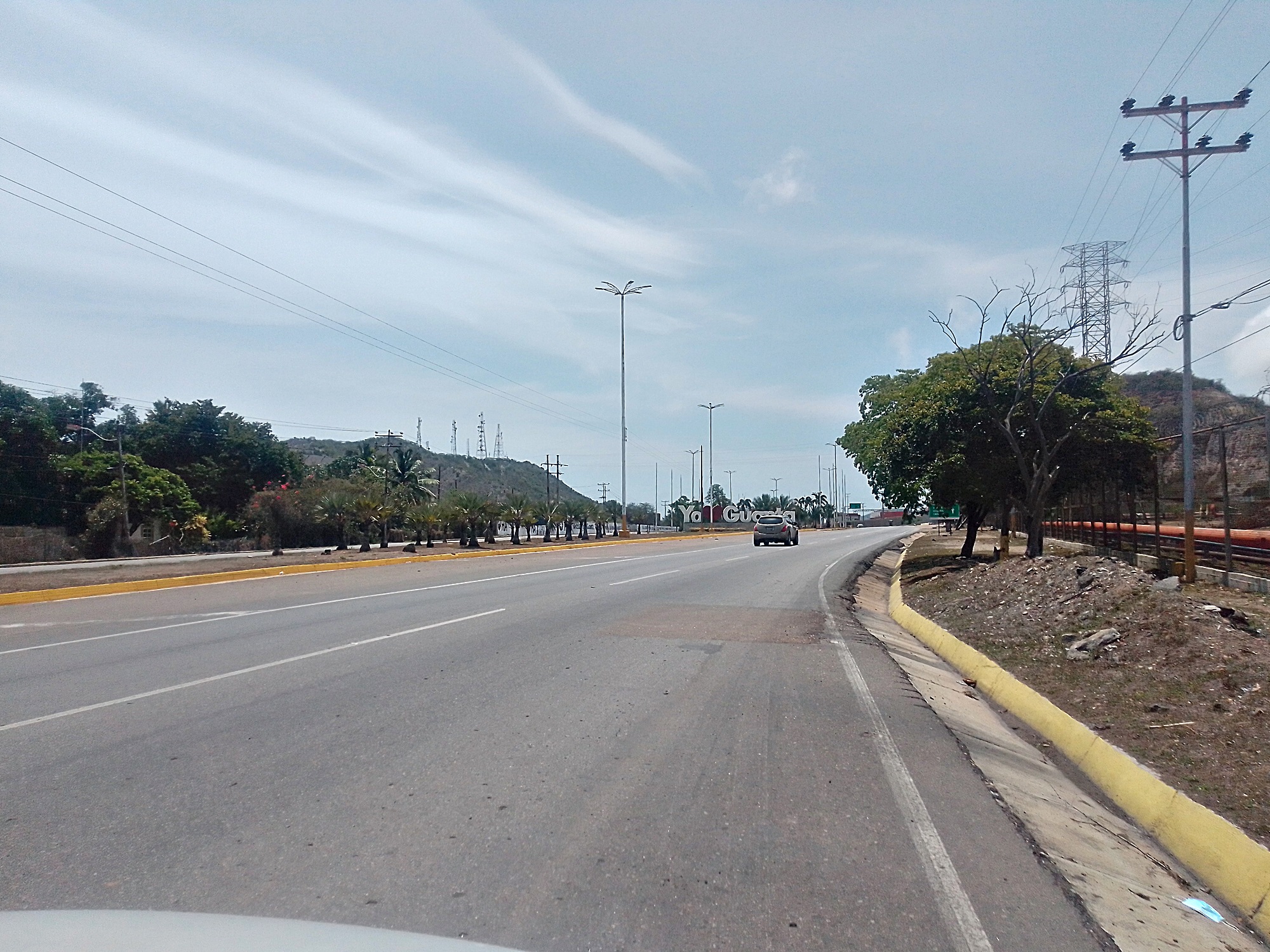 Saliendo de Puerto la Cruz, ciudad ubicada en el Estado Anzoátegui, muy cerca de la ciudad de Barcelona donde yo resido. Leaving Puerto la Cruz, a city located in the Anzoátegui State, very close to the city of Barcelona where I live.
Saliendo de Puerto la Cruz, ciudad ubicada en el Estado Anzoátegui, muy cerca de la ciudad de Barcelona donde yo resido. Leaving Puerto la Cruz, a city located in the Anzoátegui State, very close to the city of Barcelona where I live.
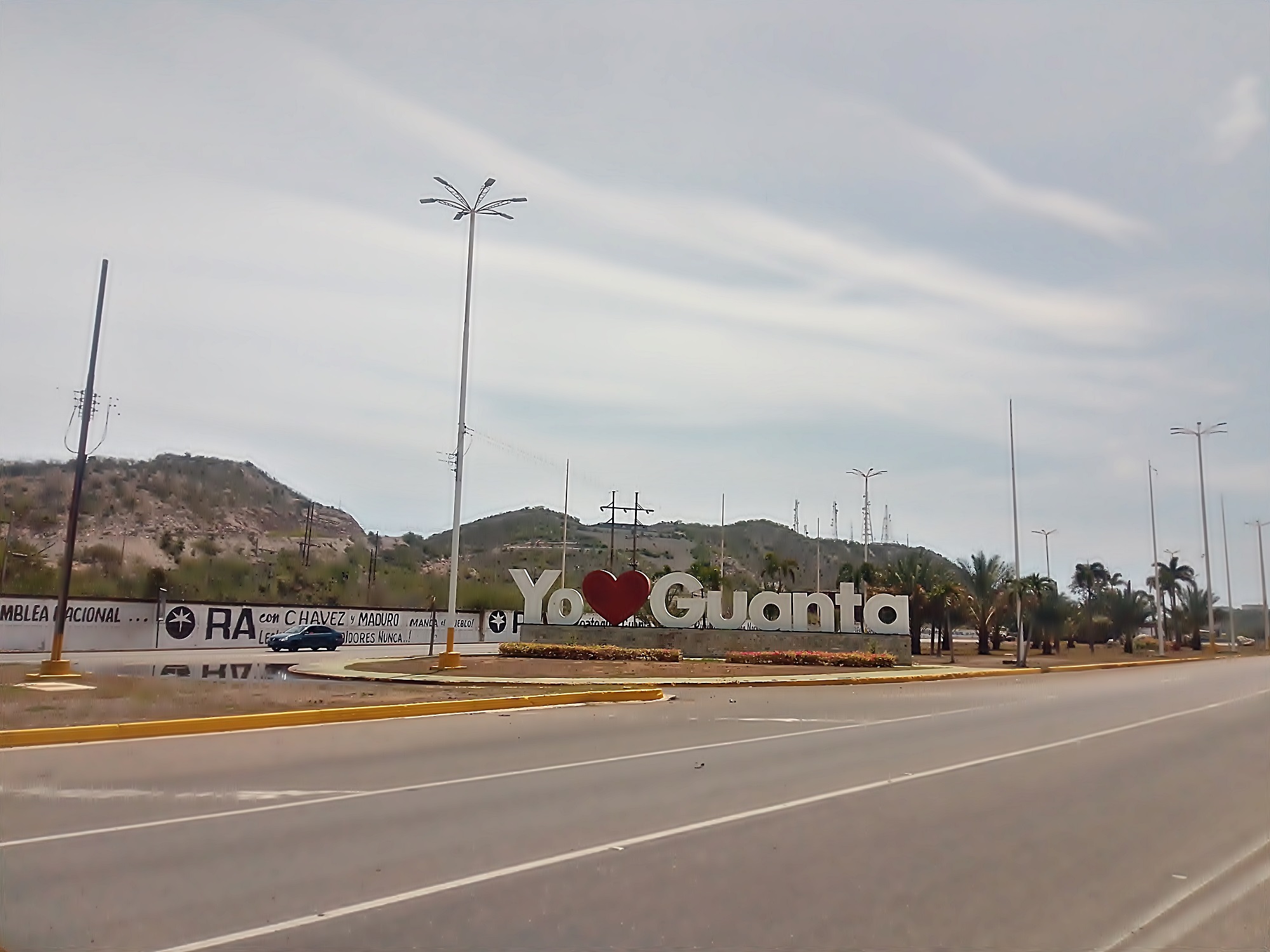
Este aviso corresponde al poblado de Guanta que se encuentra muy cerca de Puerto la Cruz.This notice corresponds to the town of Guanta, which is very close to Puerto la Cruz.
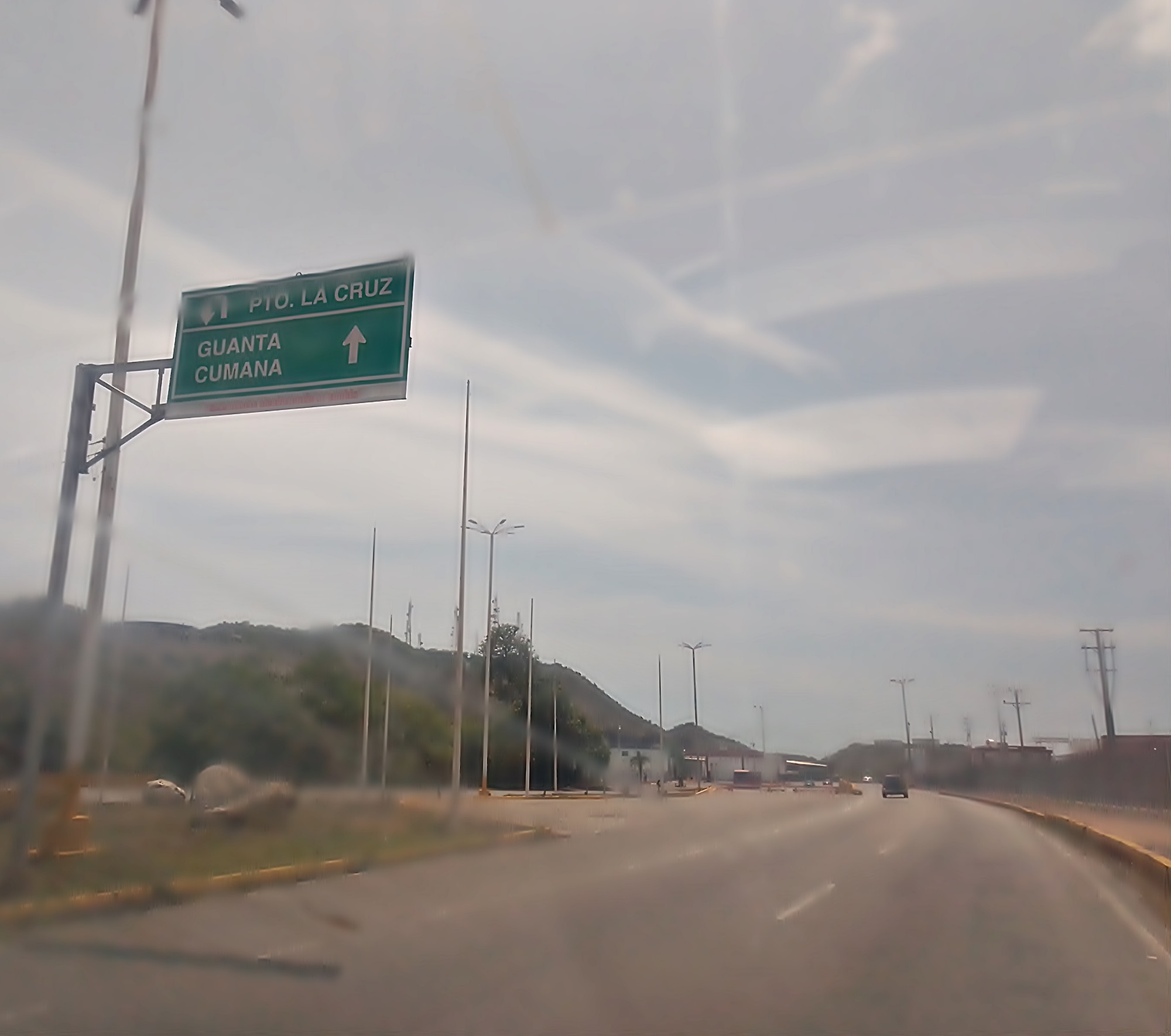
Ya comenzando a ver los avisos que guían hacia el lugar donde nos dirigimos, que es la ciudad de Cumaná.Already beginning to see the notices that guide us to the place where we are going, which is the city of Cumaná.
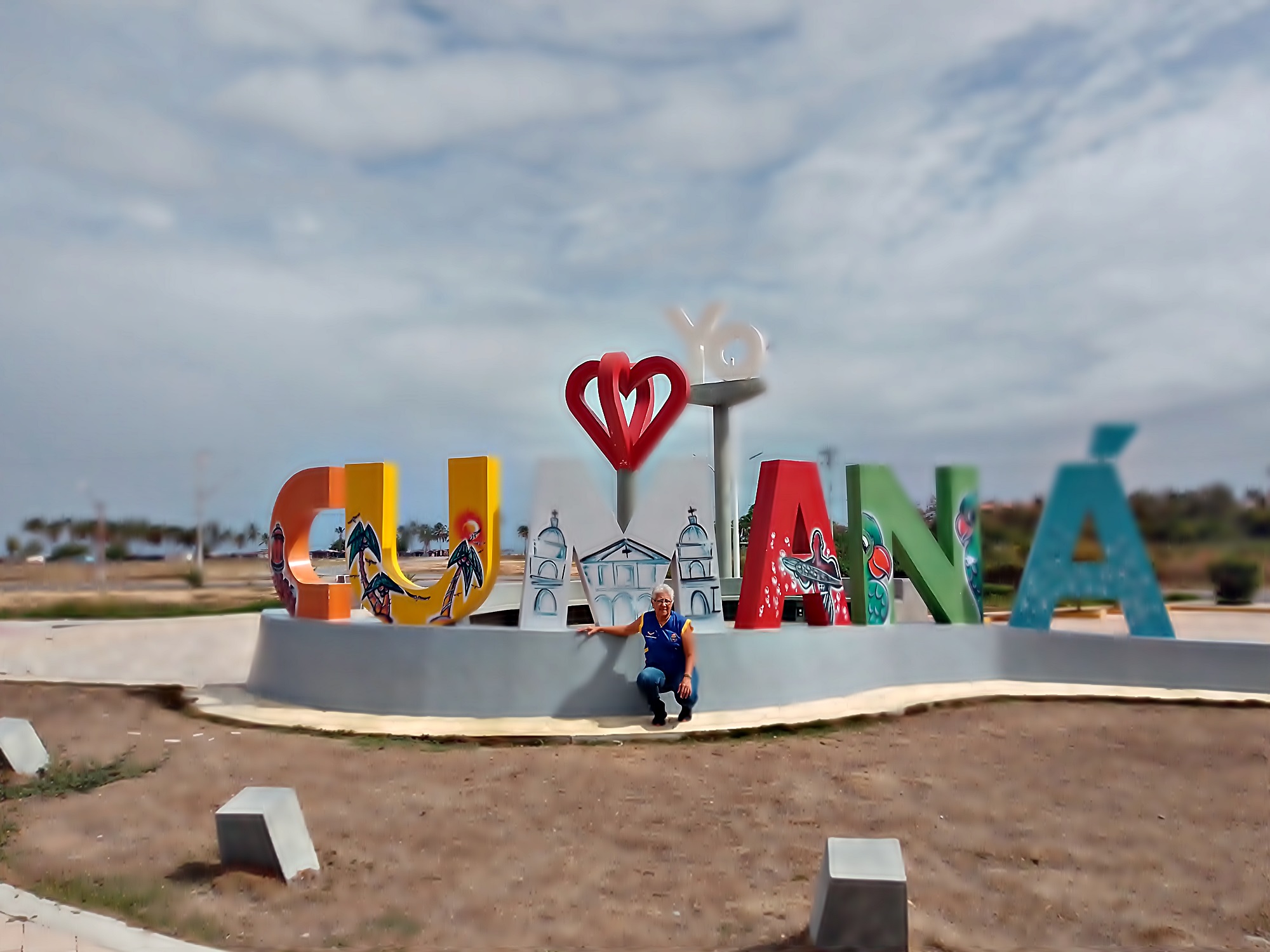
2 horas después, nos encontramos con el aviso de bienvenida en la entrada de Cumaná. Nos detuvimos un momento allí para tomar unas fotos2 hours later, we find the welcome notice at the entrance of Cumaná. We stopped there for a moment to take some photos
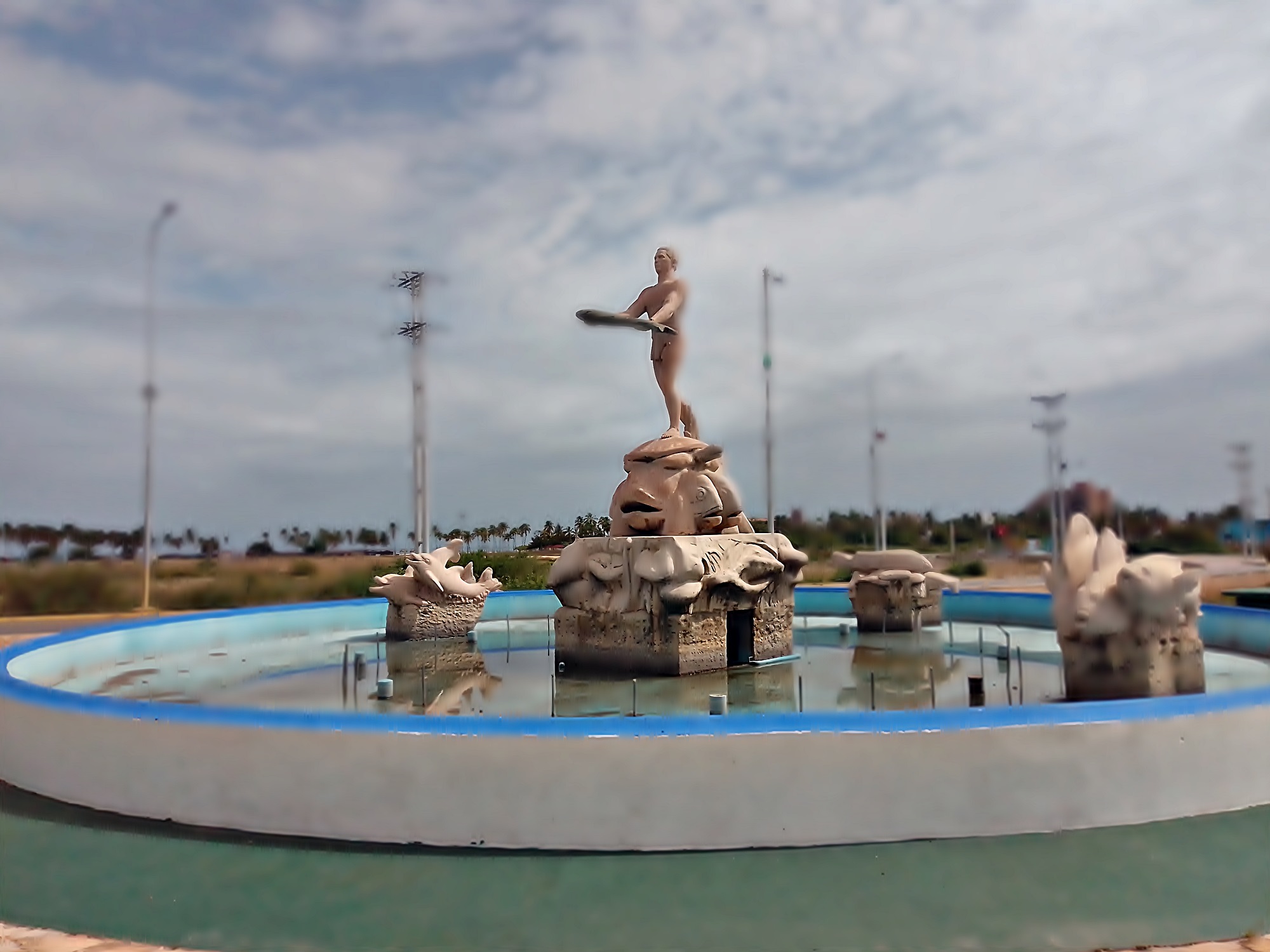
También nos da la bienvenida esta famosa esta estatua emblematica de un indio con un pescado en sus manos. El pescado es la principal actividad económica de la región This famous statue of an Indian with a fish in his hands also welcomes us. Fish is the main economic activity in the region
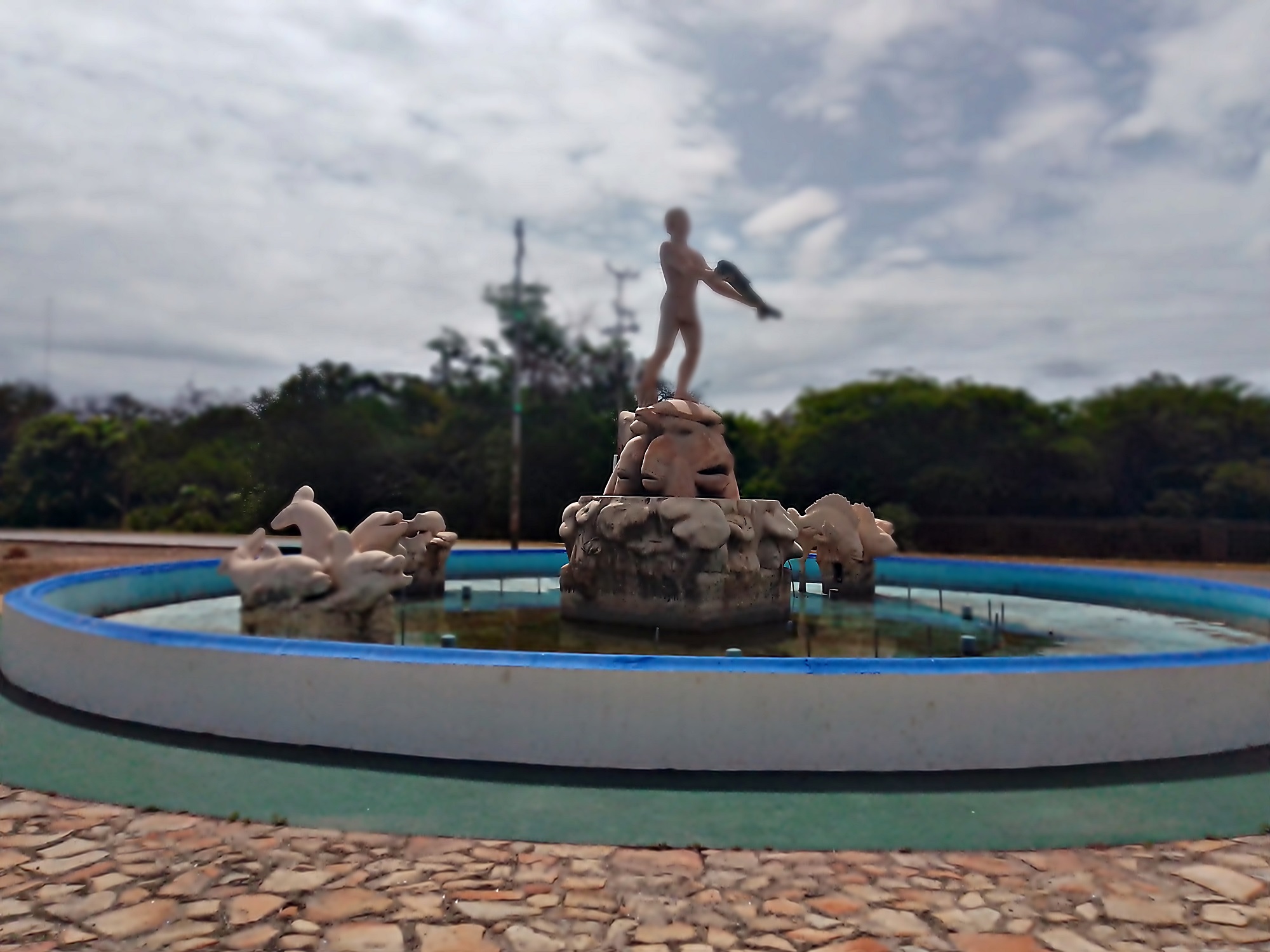
Otra vista de la Estatua, fotos que tuvimos que tomar a toda velocidad, ya que se encuentra en el medio de la vía.Another view of the Statue, photos that we had to take at full speed, since it is in the middle of the road.
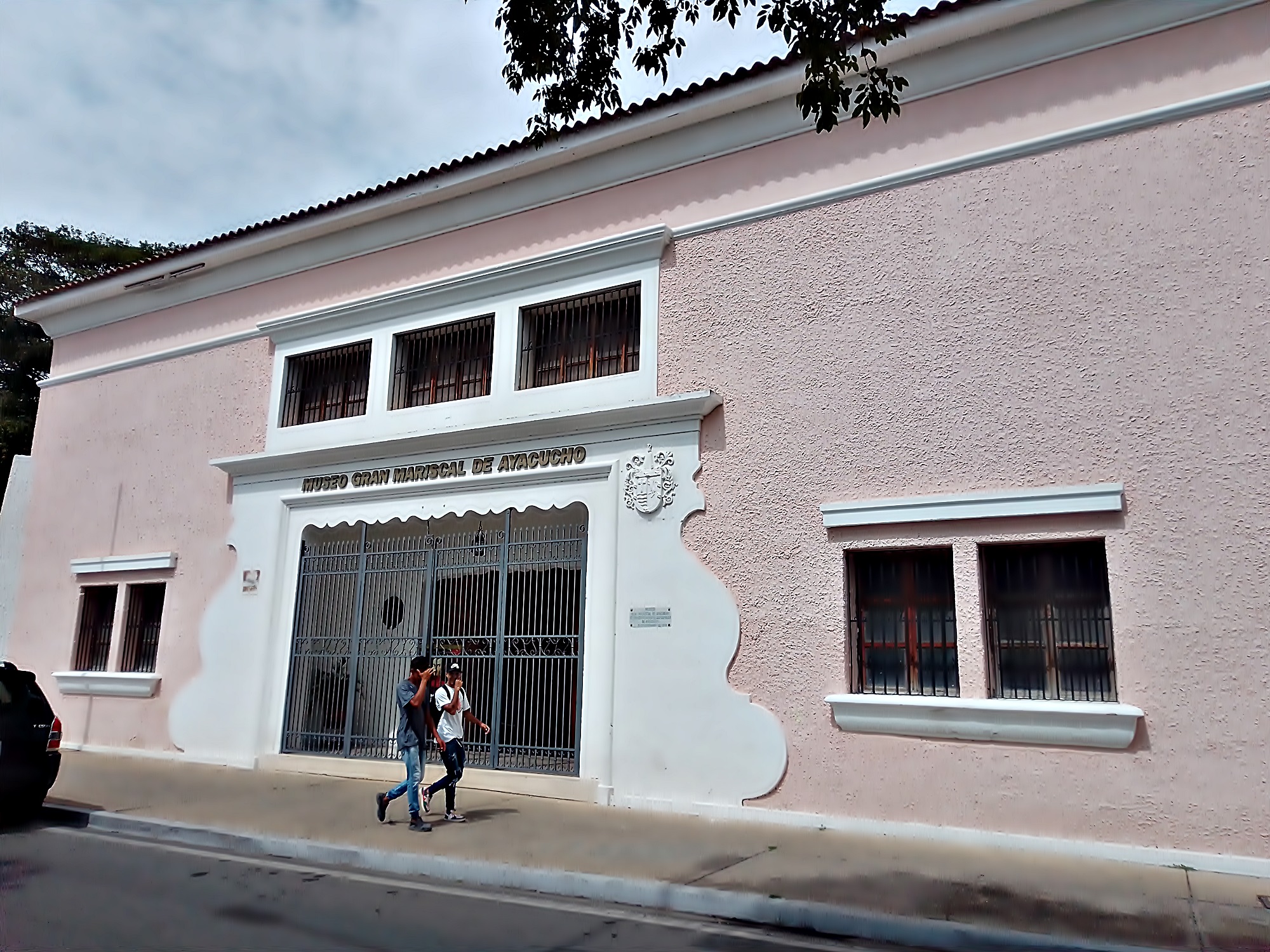
Museo "Gran Mariscal de Ayacucho", en honor a quién fue el Mariscal "Antonio josé de Sucre", que luchó al lado de "Simón Bolívar,por la independencia de Venezuela.Museum "Gran Mariscal de Ayacucho", in honor of who was the Marshal "Antonio josé de Sucre", who fought alongside "Simón Bolívar, for the independence of Venezuela.
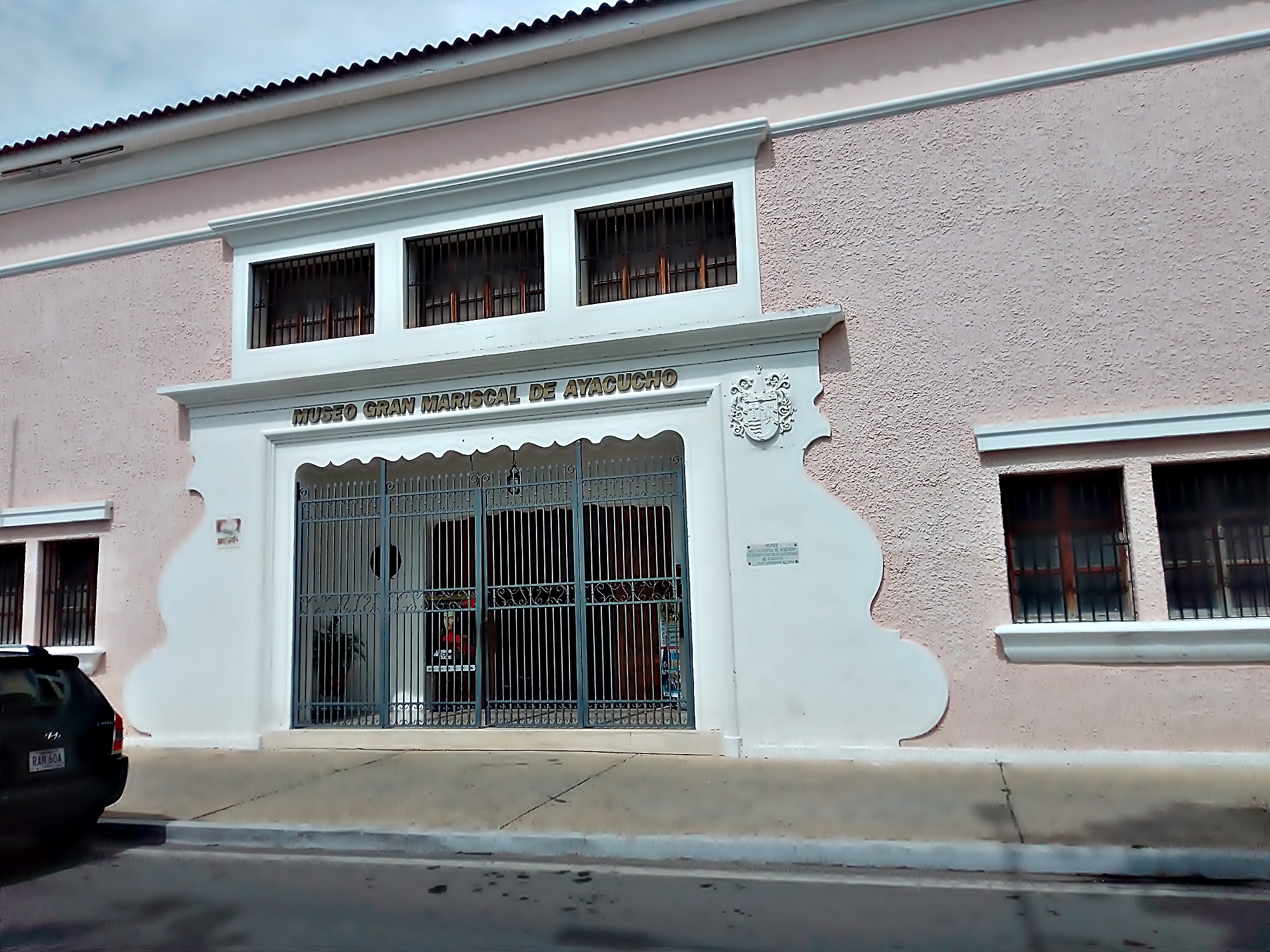
Desafortunadamente, el museo se encontraba cerrado
Unfortunately, the museum was closed
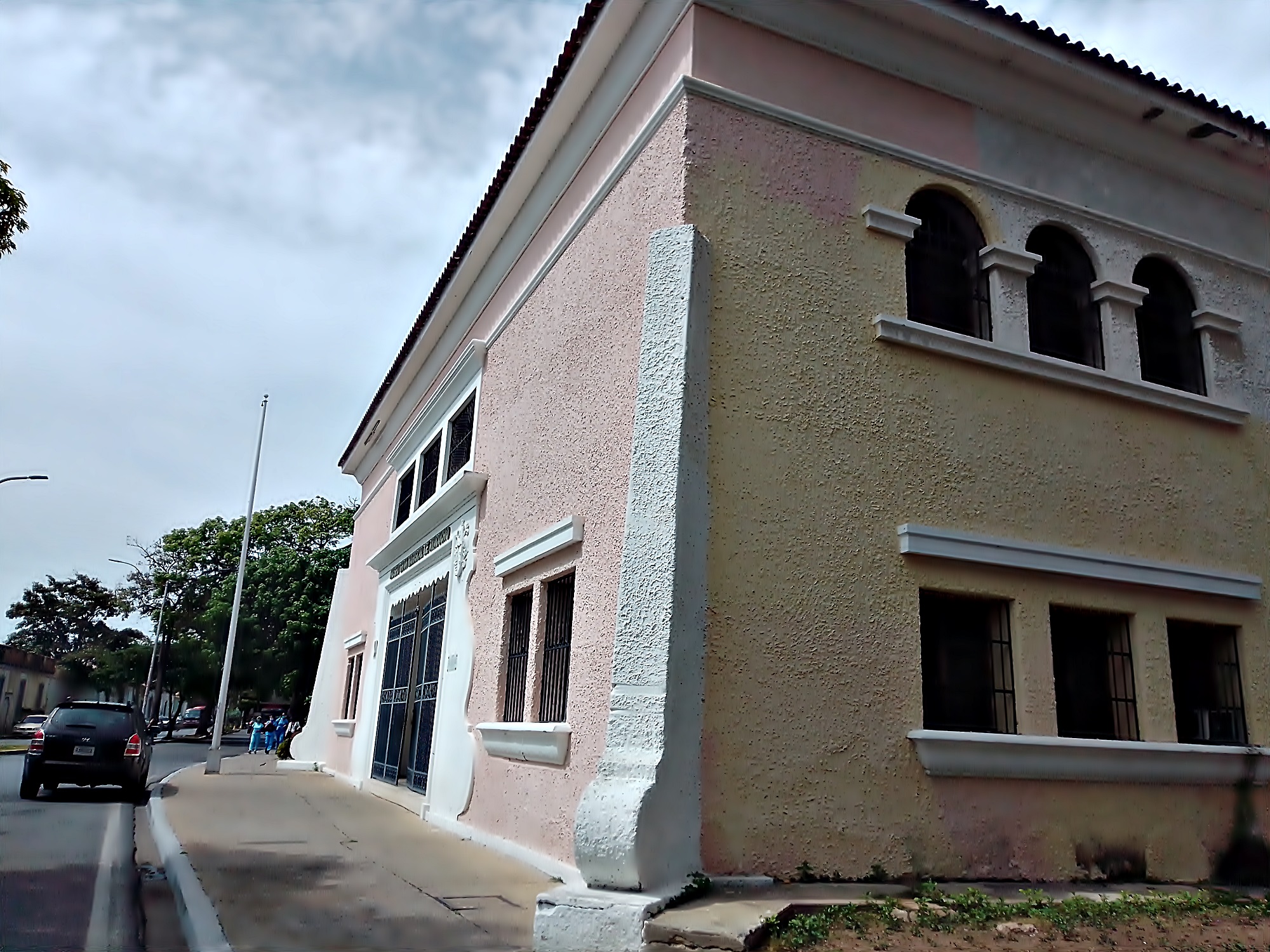
Vista lateral del Museo "Gran Mariscal de Ayacucho".Side view of the "Gran Mariscal de Ayacucho" Museum.
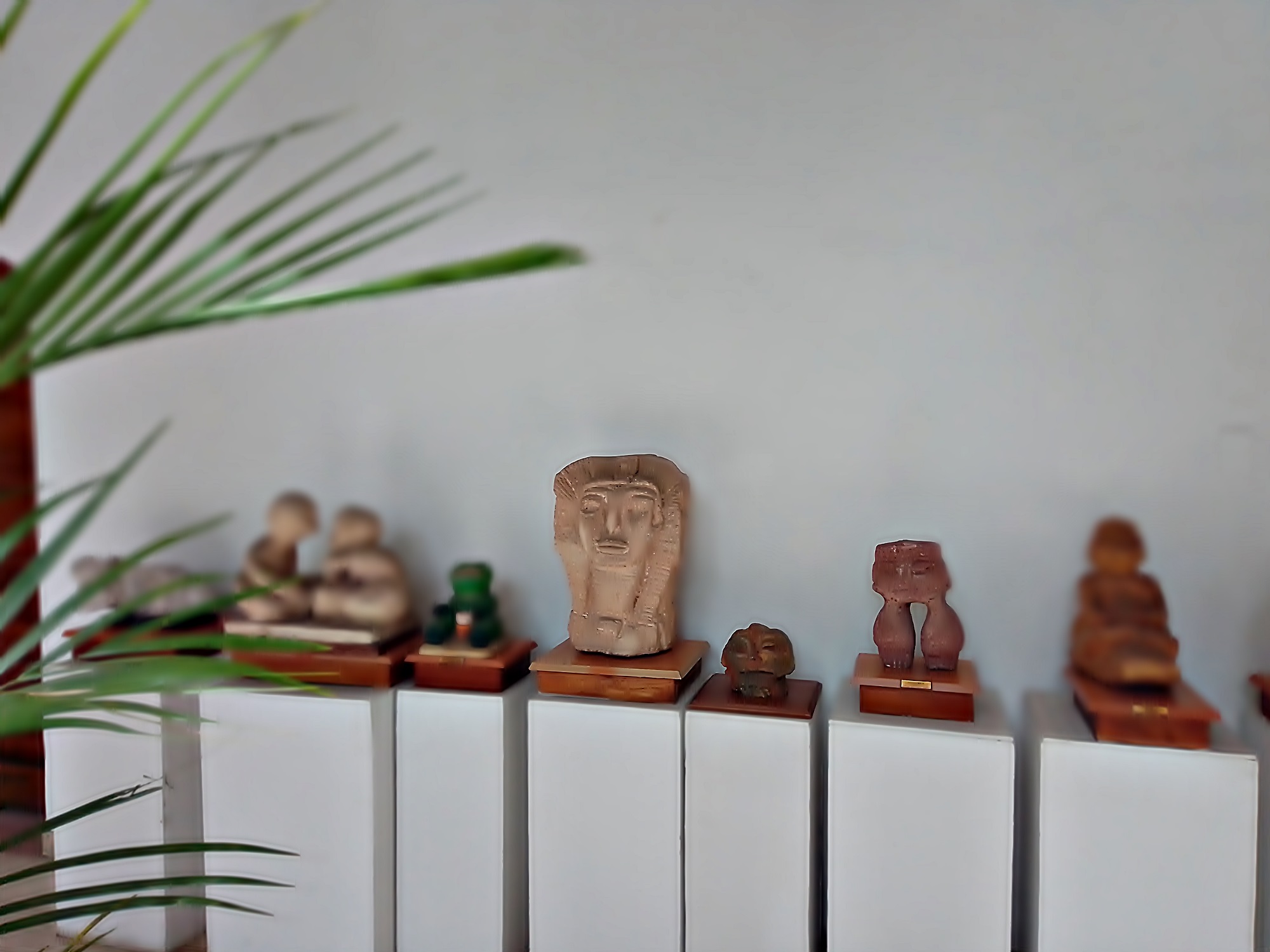
Tuvimos que conformarnos con tomar fotos desde afuera a través de las rejas, pero no fué mucho lo que pudimos fotografiarWe had to settle for taking photos from the outside through the bars, but there was not much we were able to photograph
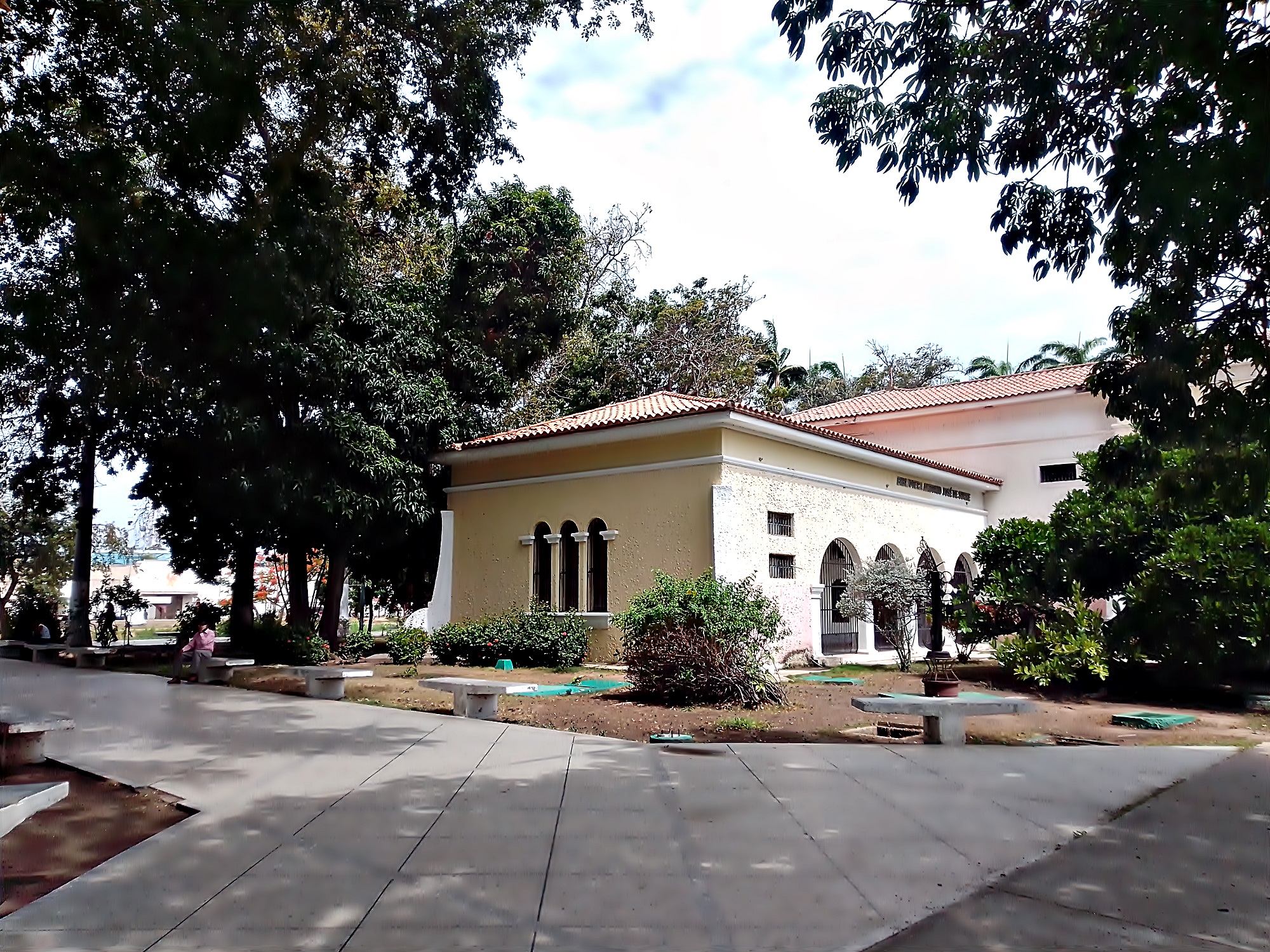
Otra vista lateral del museo que esta ubicado, en el centro de la ciudad, dentro de un parque natural, que lleva el mismo nombre de dicho museo, Parque "Ayacucho".Another side view of the museum that is located, in the center of the city, within a natural park, which bears the same name as said museum, "Ayacucho" Park.
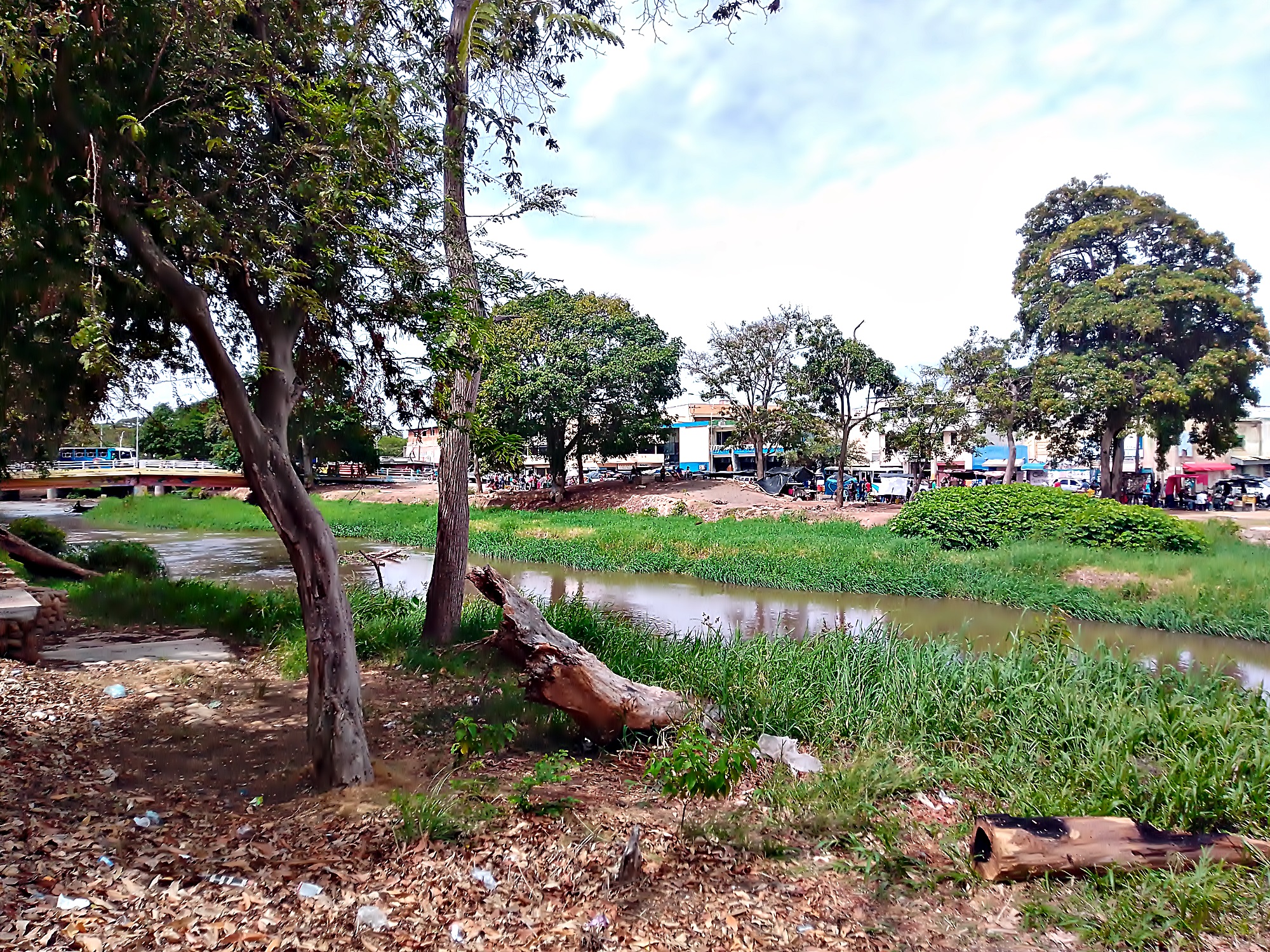
El Parque "Ayacucho" está a las orillas del Rio Manzanarez, que divide a la ciudad en dos partes, ya que para pasar al otro lado de la ciudad, hay que pasar por un puente que une un lado con el otro. El puente se puede ver a lo lejos, del lado izquierdo.The "Ayacucho" Park is on the banks of the Manzanarez River, which divides the city into two parts, since to go to the other side of the city, you have to go through a bridge that connects one side to the other. The bridge can be seen in the distance, on the left side.

Esta soy yo, debajo de este gran árbol centenario, con una enorme y extraña raíz.This is me, under this great hundred-year-old tree, with a huge and strange root.
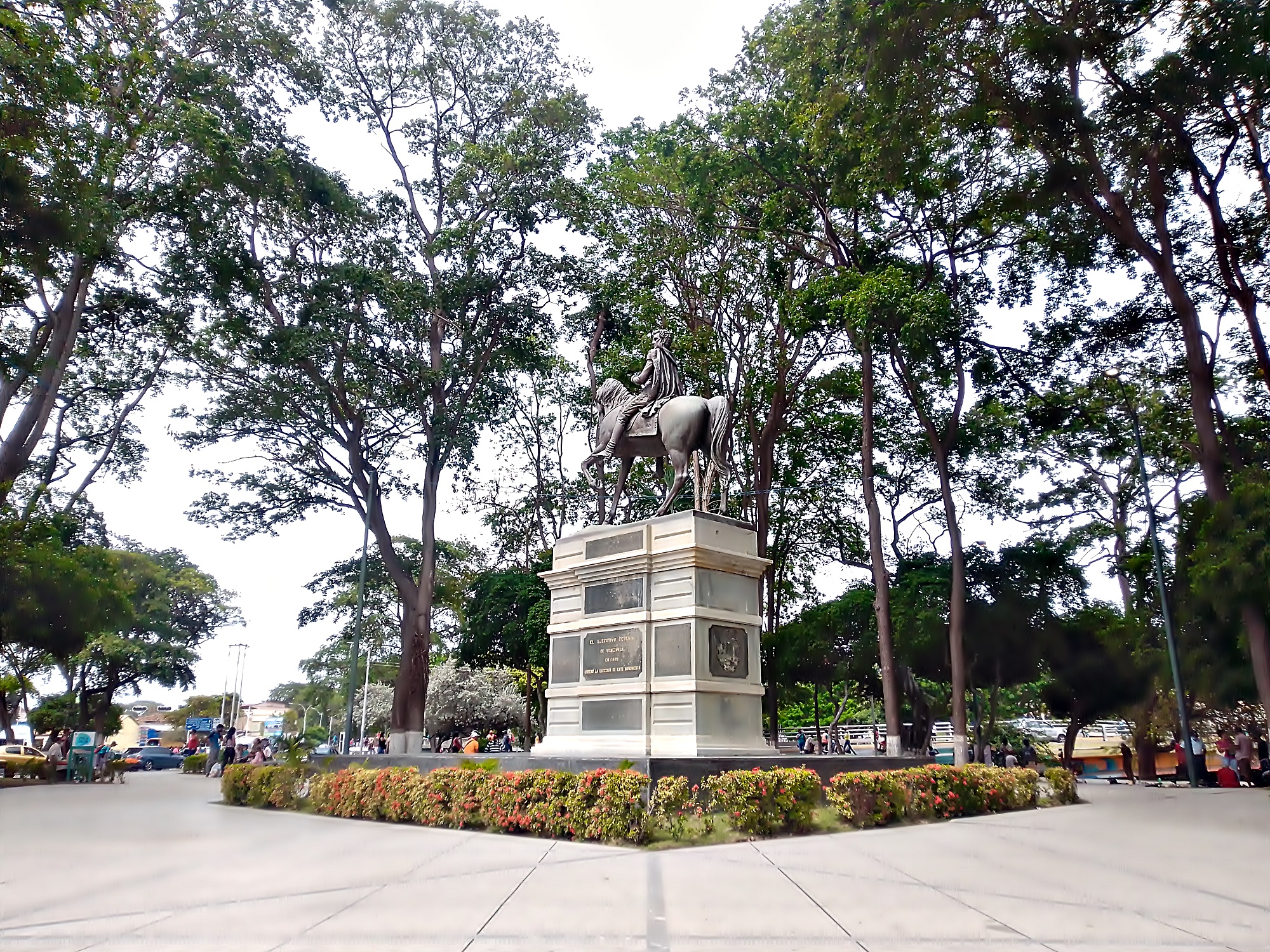
Vista de la Estatua del Prócer que se encuentra en el centro del parque.View of the Statue of the Prócer that is in the center of the park.
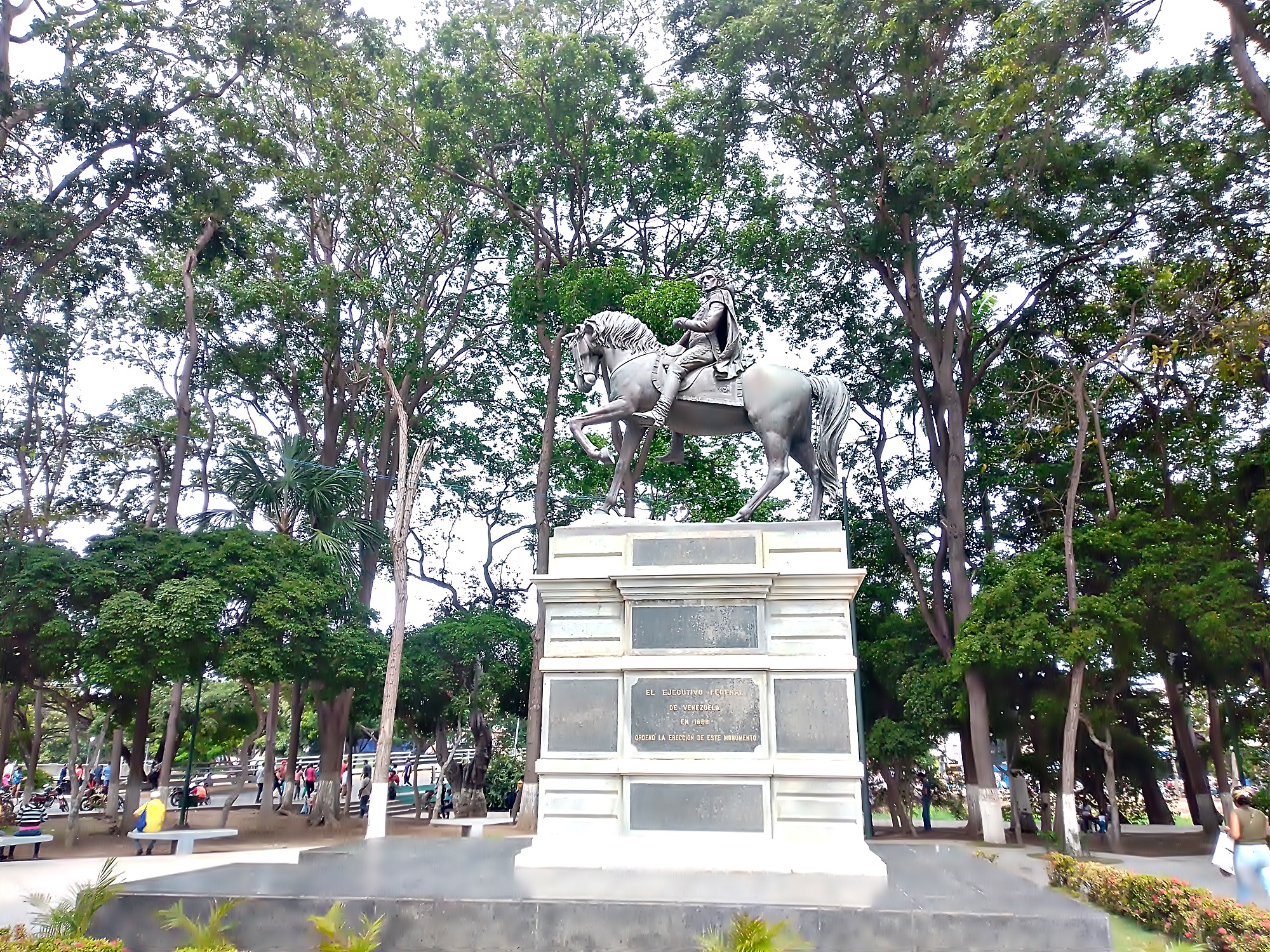
Vista lateral de la misma estatua.Side view of the same statue.
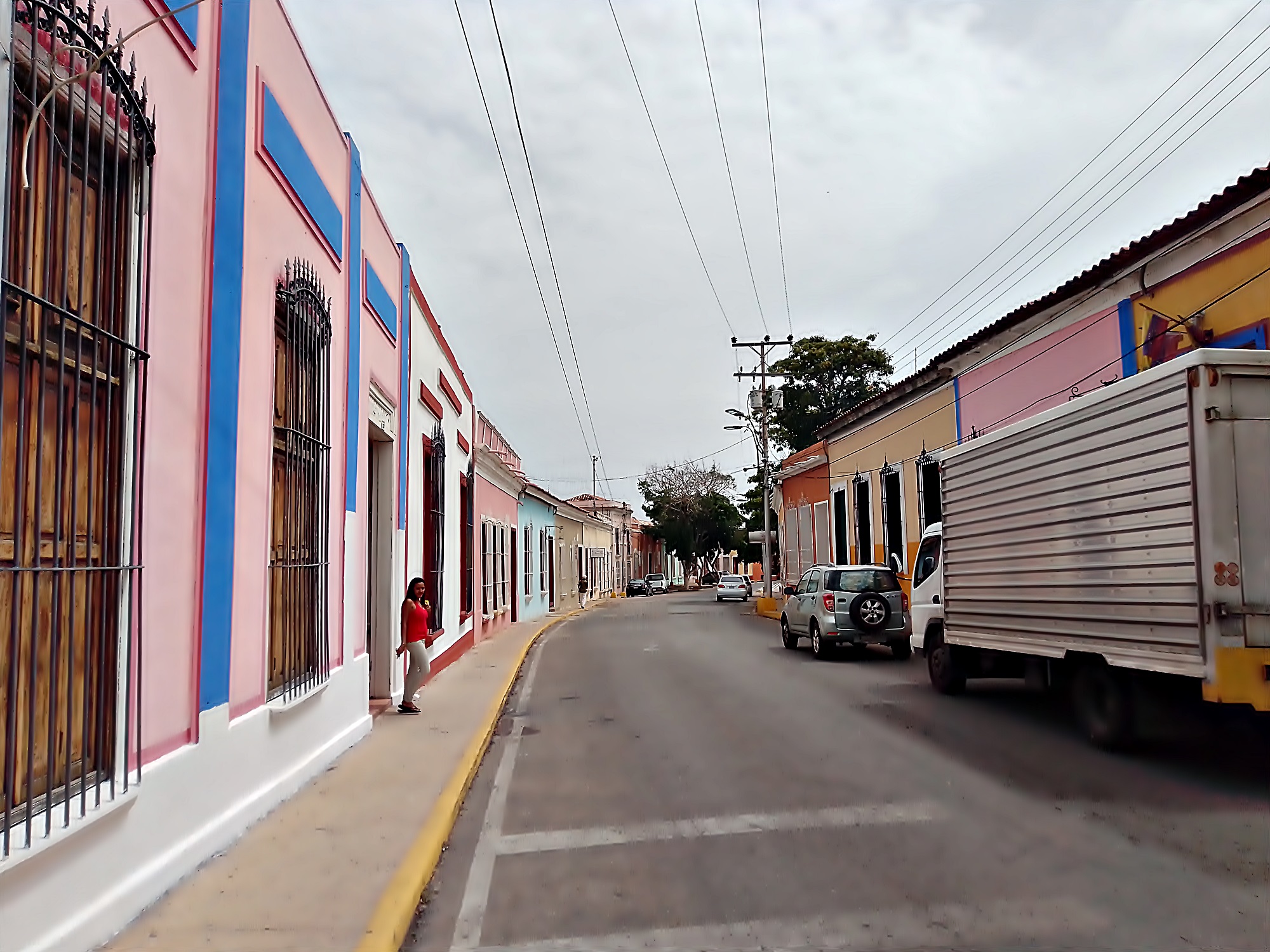
Las coloridas Casas Coloniales de cumaná, que son conservadas como Patrimonio Nacional en el Estado Sucre.The colorful Colonial Houses of Cumaná, which are conserved as National Heritage in the Sucre State.
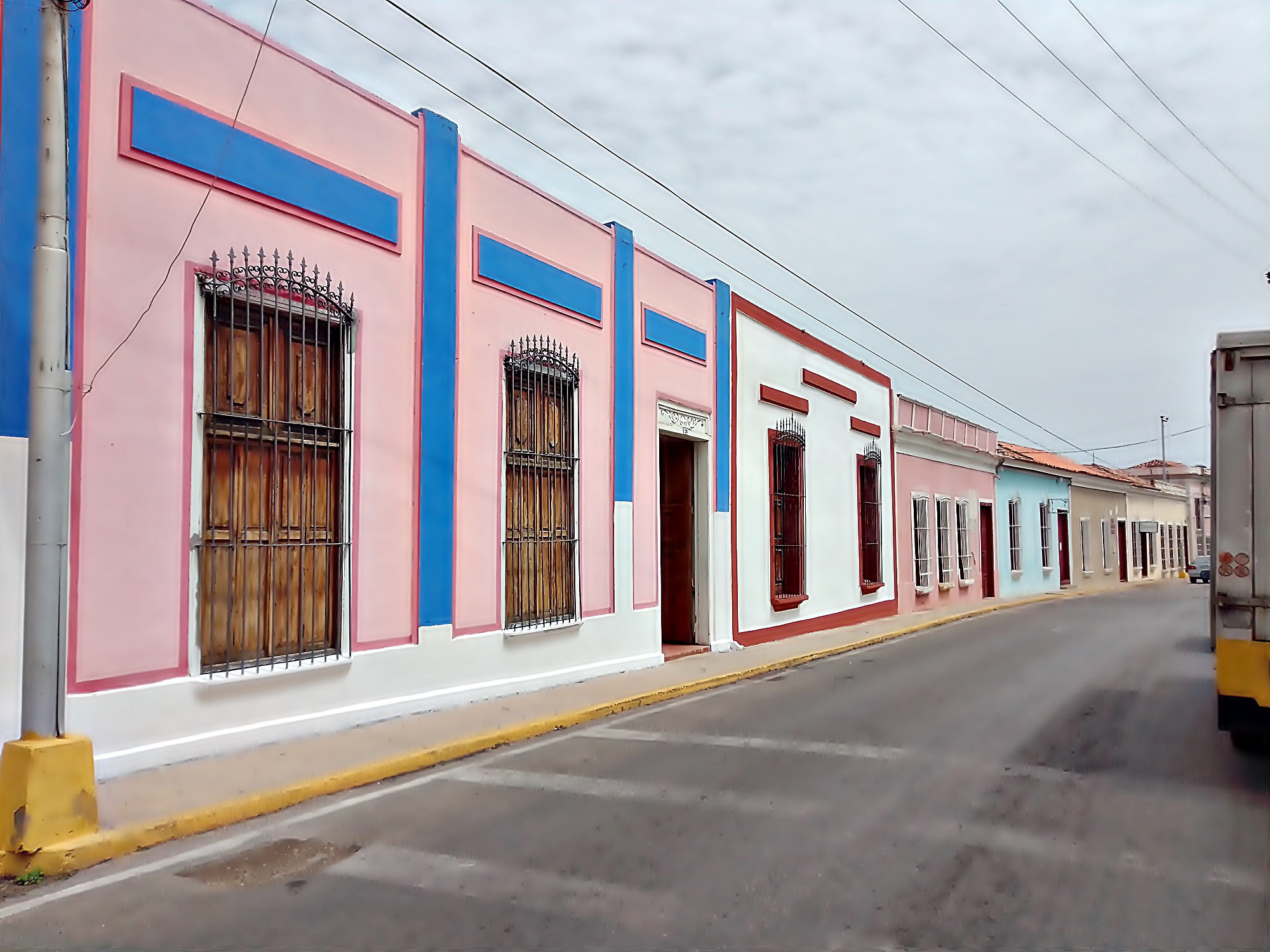
Otra vista de una de sus calles Coloniales.Another view of one of its Colonial streets.
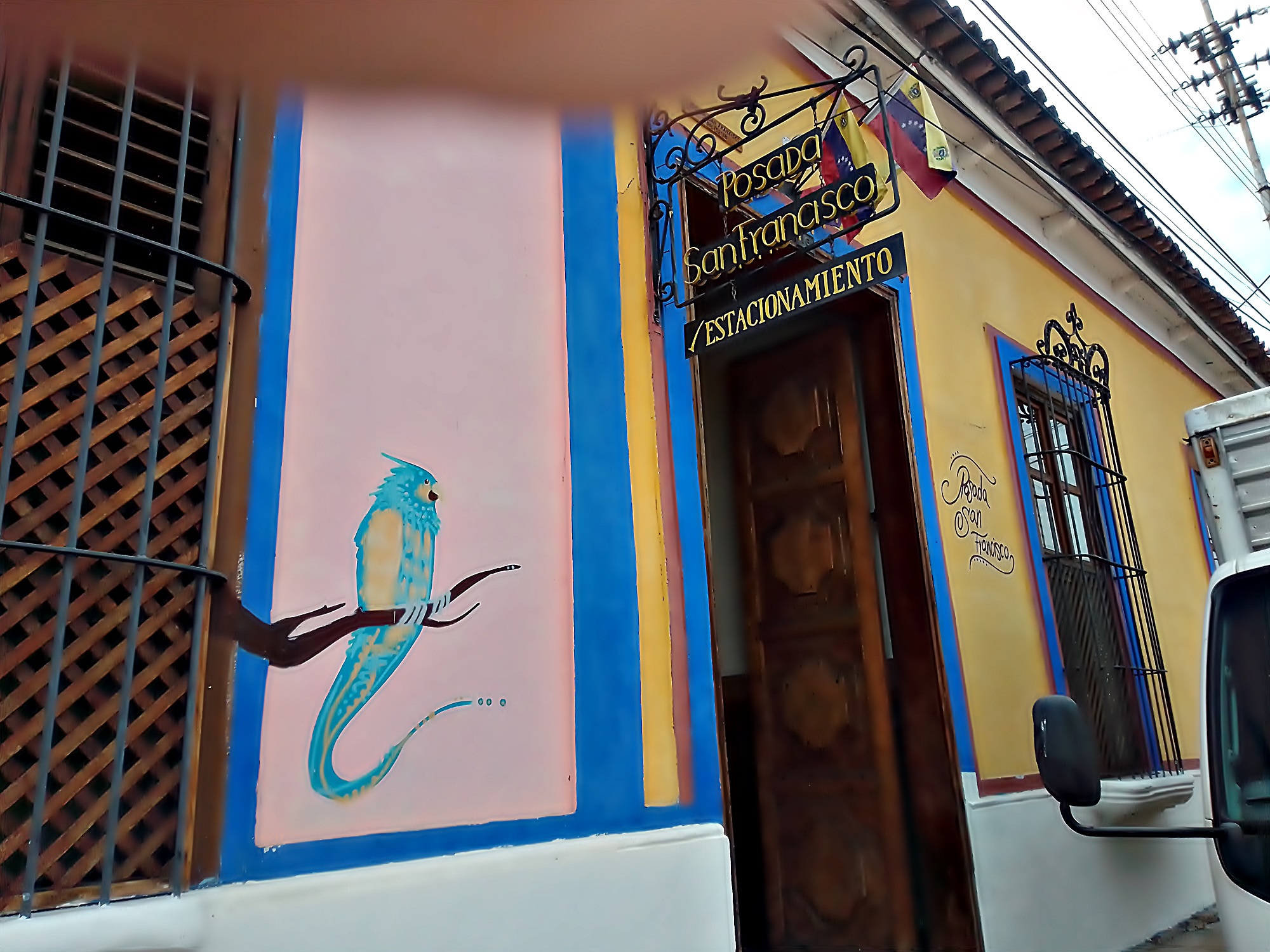
La Posada, con su diseño, al estilo de la Época Colonial. La Posada, with its design, in the style of the Colonial Era.
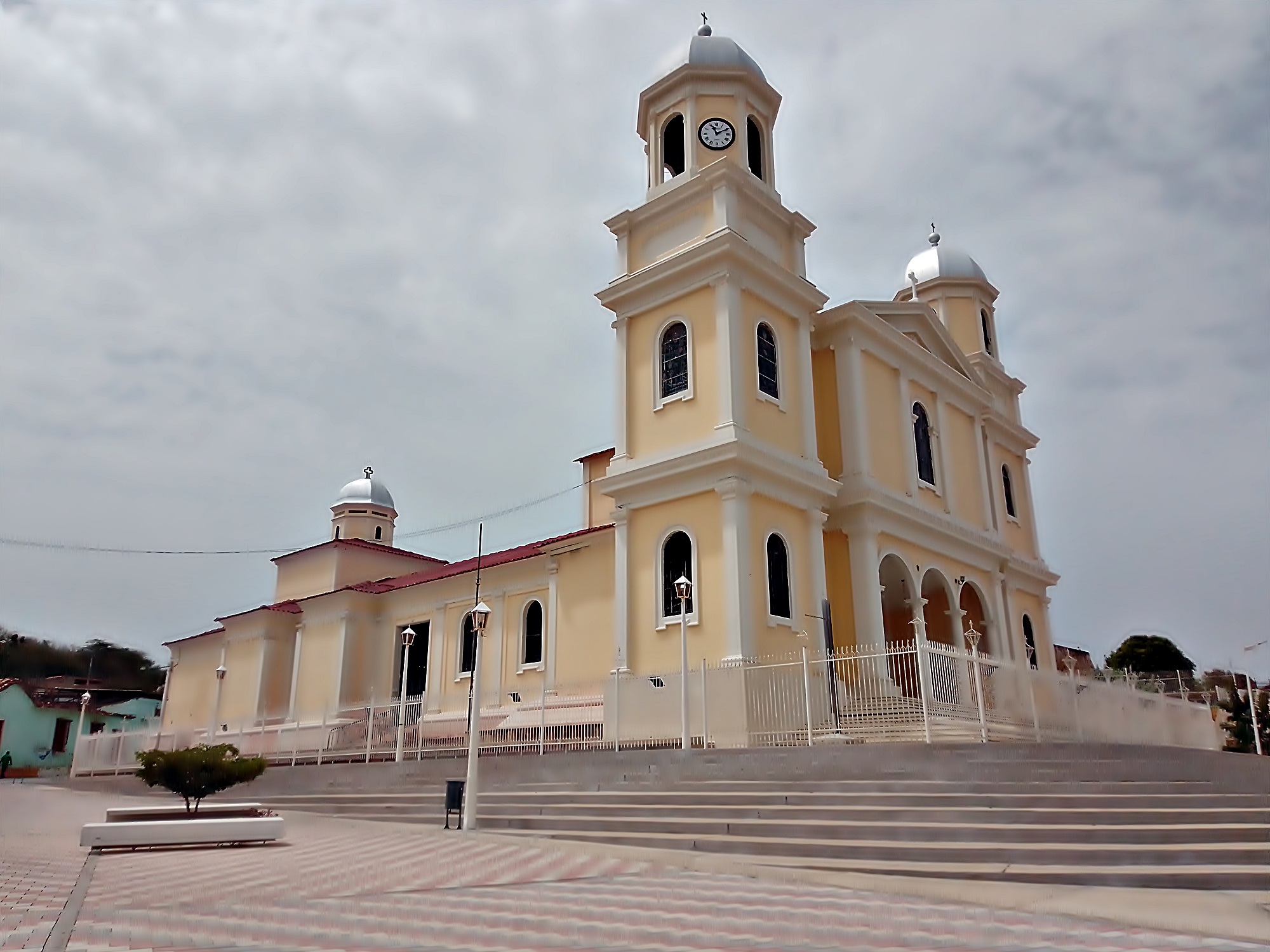
La hermosa e imponente, Catedral de Santa Inés, cuyo nombre fue puesto en honor de la Patrona de la Ciudad de Cumaná, llamada "Santa Inés".The beautiful and imposing Cathedral of Santa Inés, whose name was put in honor of the Patron Saint of the City of Cumaná, called "Santa Inés".
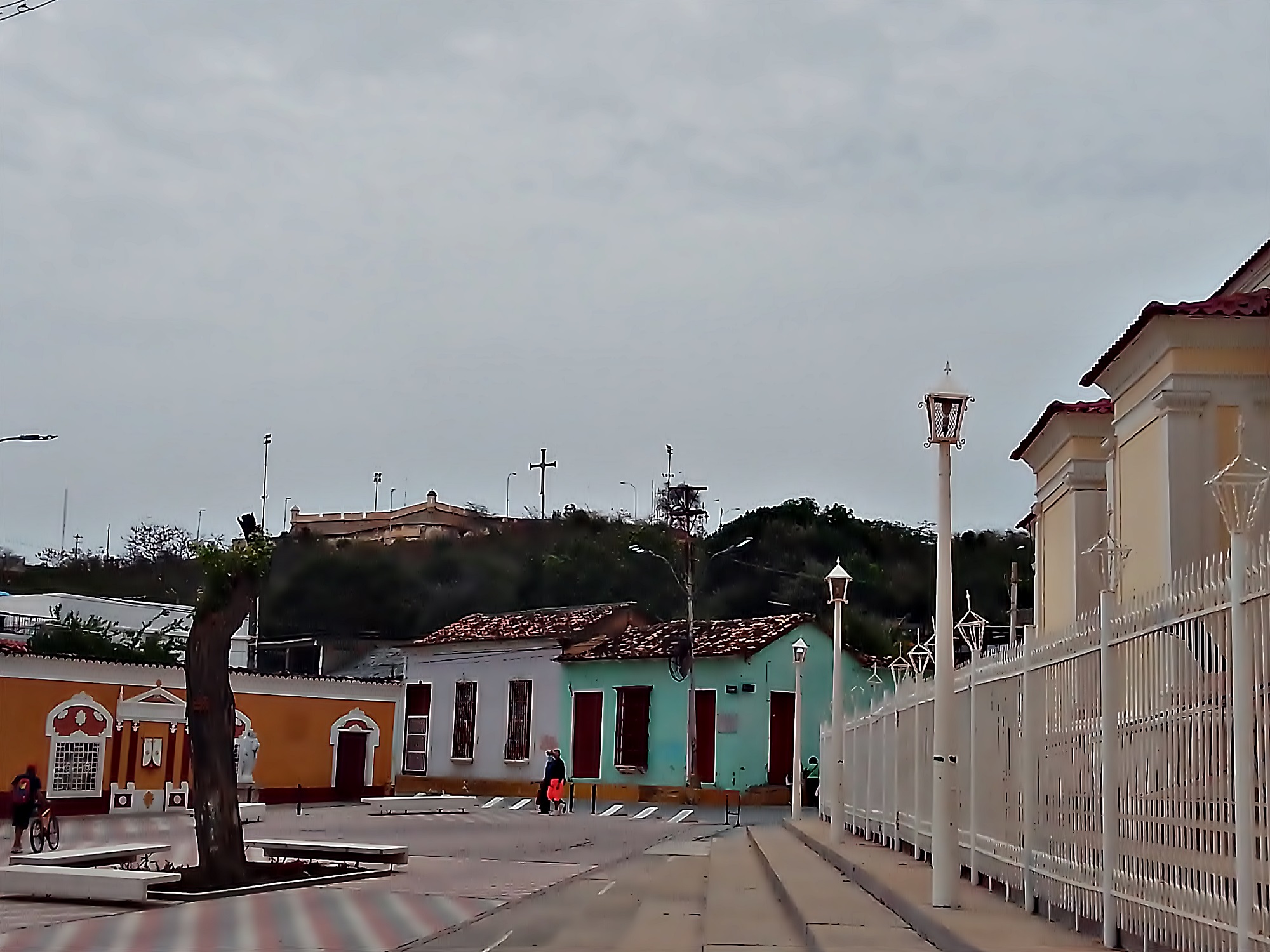
Una vista lateral Izquierda de la Catedral, desde donde se divisa el Castillo de Cumaná, al cual no pudimos tener acceso, así que le tomamos la foto desde este punto.A left side view of the Cathedral, from where you can see the Castle of Cumaná, which we could not access, so we took the photo from this point.
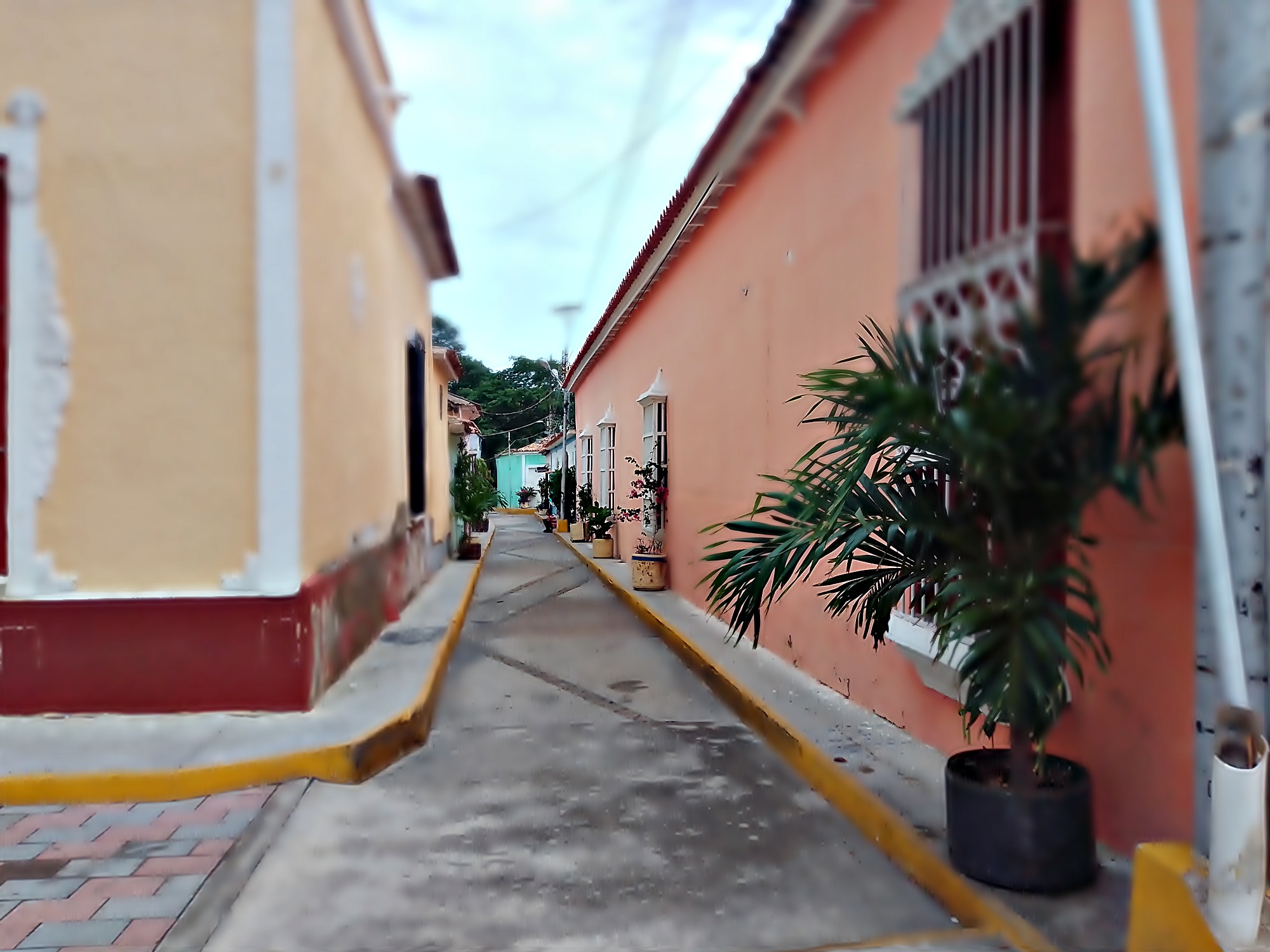
Un pasillo Colonial, por donde pasaban los coches de la época, hoy en día sestos pasillos son utilizados por la gente del lugar para acortar el camino hacia el otro lado.A Colonial corridor, where the cars of the time passed, today these corridors are used by the locals to shorten the way to the other side.

En la ciudad de Cumaná, también pude visitar esta caminería a la orilla del mar, donde la gente acostumbraba a realizar actividades físicas, en este momento se encontraba bastante solo, me imagino que ya saben el porqué, de tal soledad... In the city of Cumaná, I was also able to visit this walkway on the seashore, where people used to do physical activities, at this time they were quite alone, I imagine they already know why, of such loneliness ...
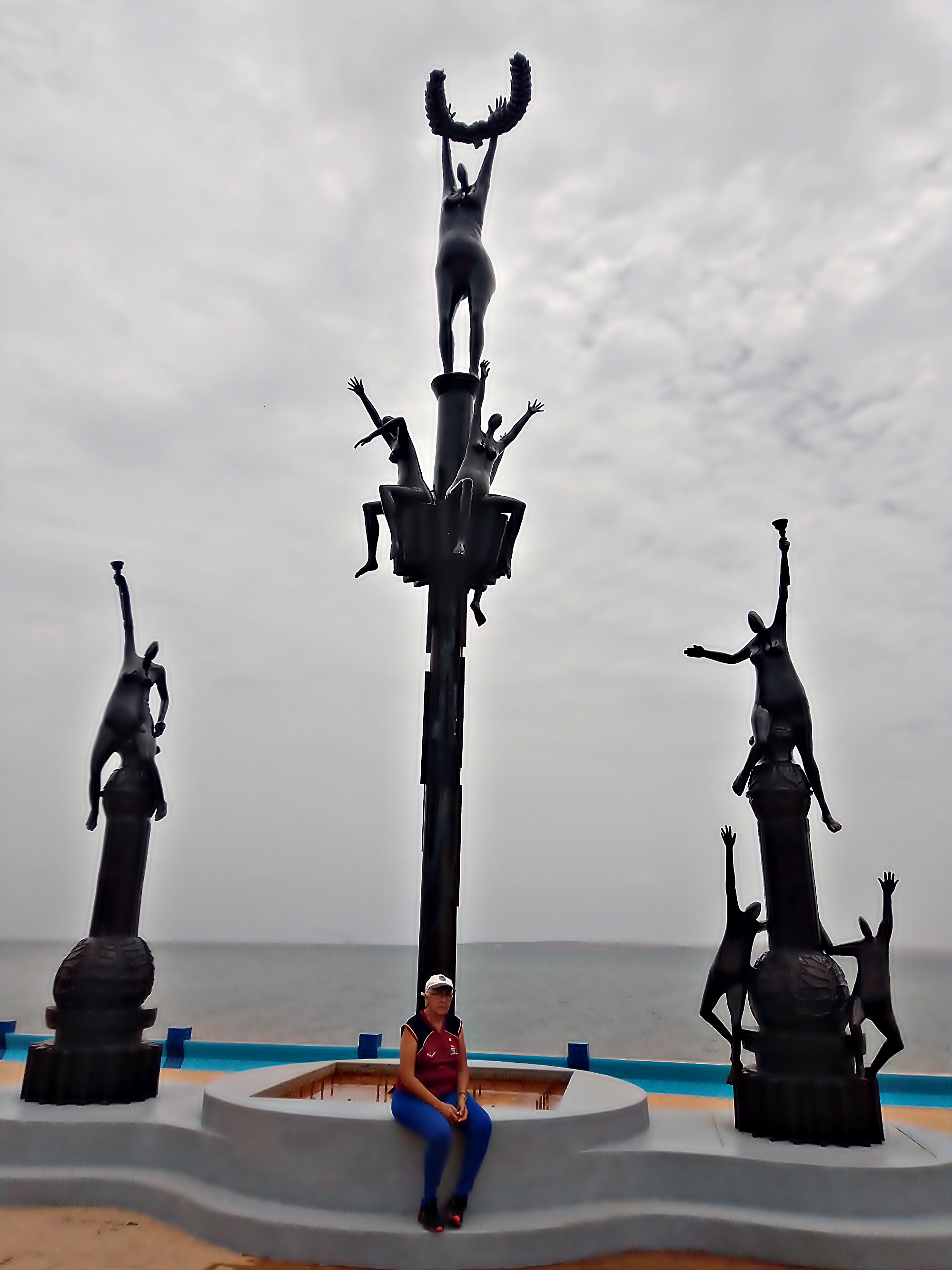
Pude ver esta escultura que en realidad es muy bella, pero que no tenía ninguna descripción, así que me quedé con las ganas de saber cual era su significado. Busqué en google, y nada... Solo sé que conmemora los 500 años de la ciudad de Cumaná.I could see this sculpture that is actually very beautiful, but it had no description, so I was left with the desire to know what its meaning was. I googled, and nothing ... I only know that it commemorates the 500 years of the city of Cumaná.
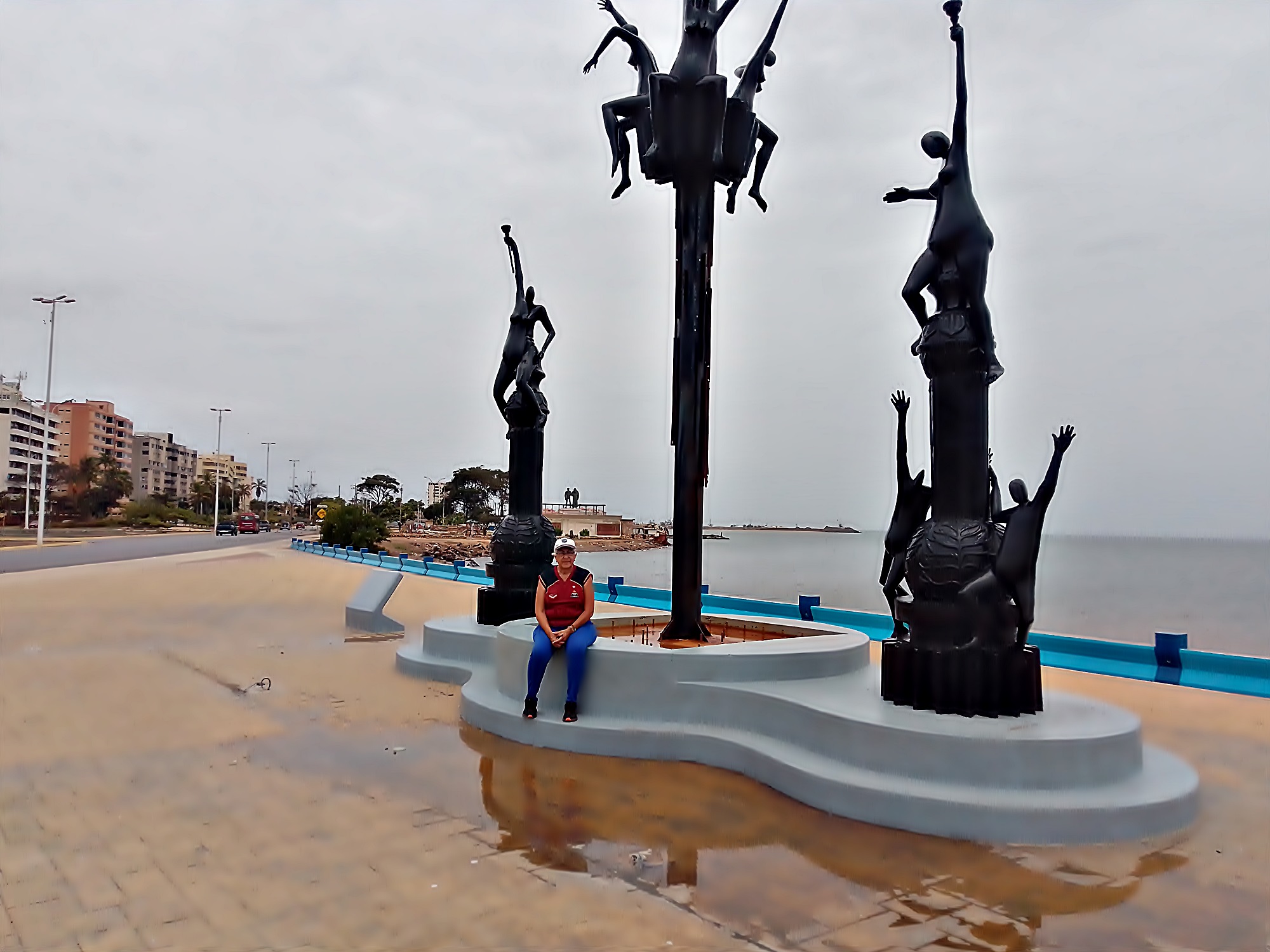
Aquí se puede notar que esta caminería esta a la orilla del mar.Here you can see that this path is on the seashore.
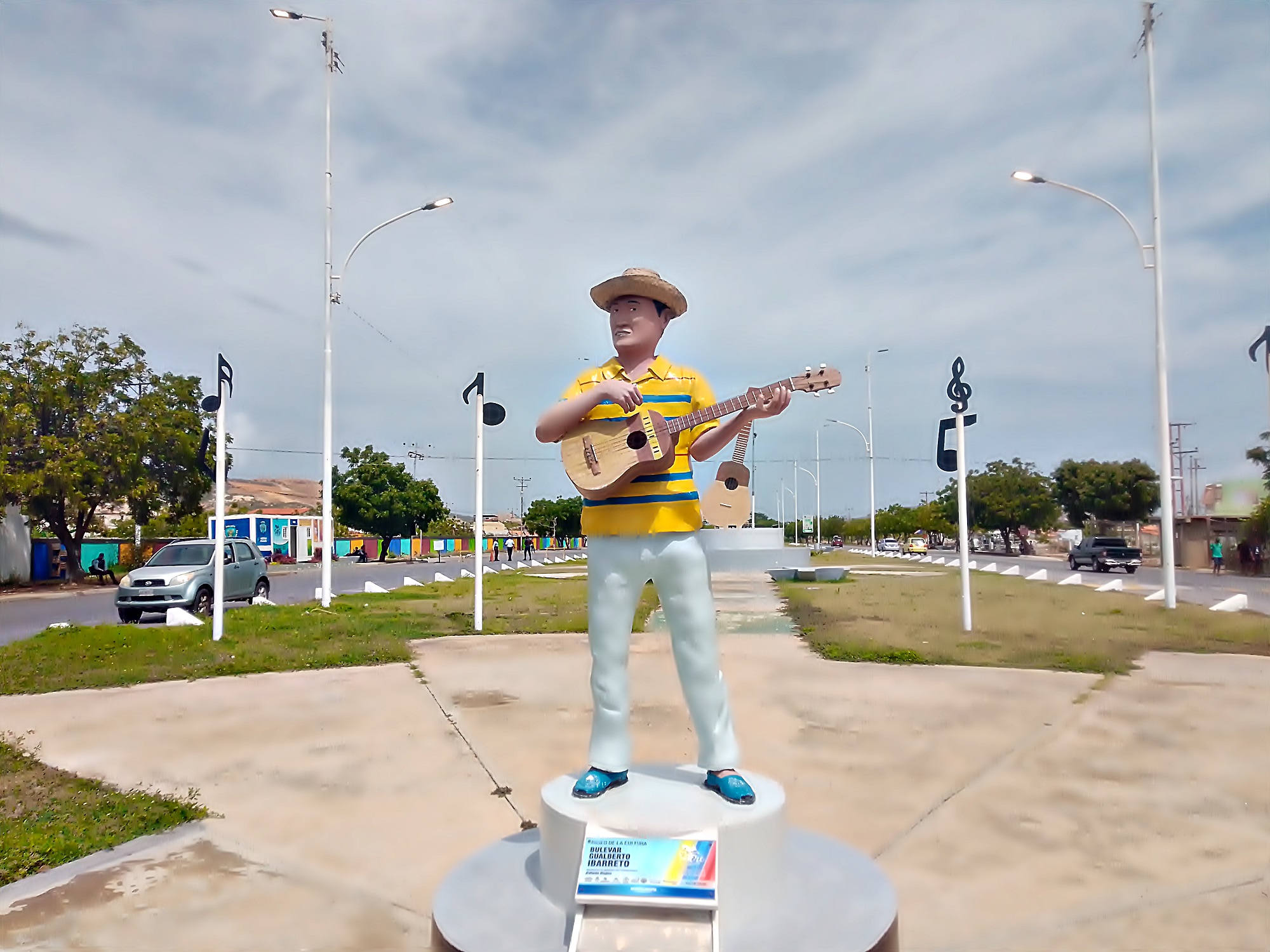
Otro emblemático lugar que pude visitar fue esta otra caminería ubicada en la salida de la ciudad y frente a un poblado llamado "El Peñón", que fue hecha en honor de un cantante típico muy conocido a nivel nacional pero que era nacido en el estado Sucre, llamado "Gualberto Ibarreto". Se puede ver esta especie de escultura a tamaño natural que inicia la entrada de la caminería que lleva su nombre..Another emblematic place that I was able to visit was this other road located at the exit of the city and in front of a town called "El Peñón", which was made in honor of a typical singer well known nationally but who was born in the Sucre state. , called "Gualberto Ibarreto". You can see this kind of life-size sculpture that begins the entrance to the path that bears his name.
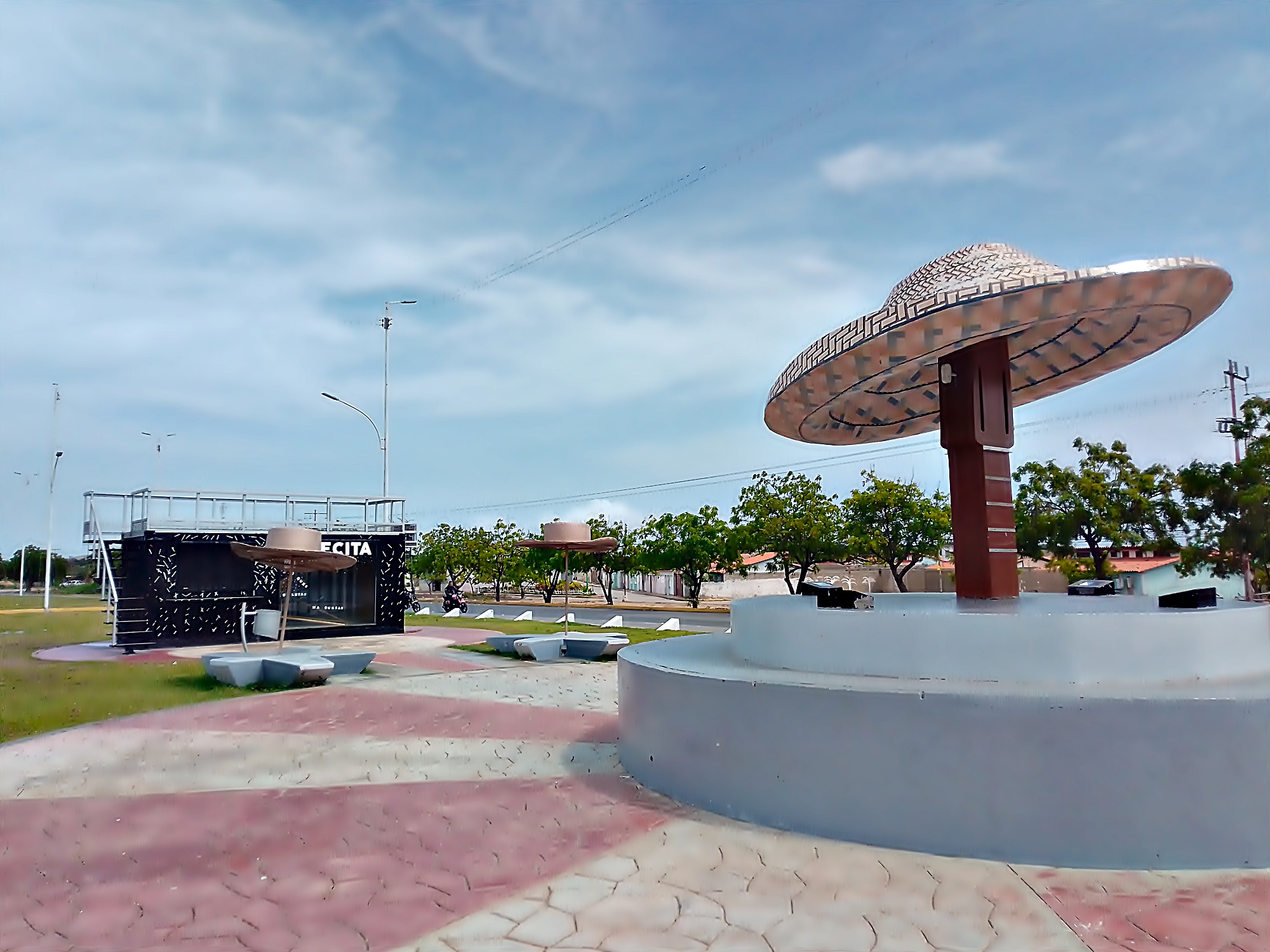
Aquí vemos la escultura del sombrero típico de la región y que era usado siempre por el cantante en cada una de sus presentaciones.Here we see the sculpture of the typical hat of the region and that was always worn by the singer in each of his presentations.
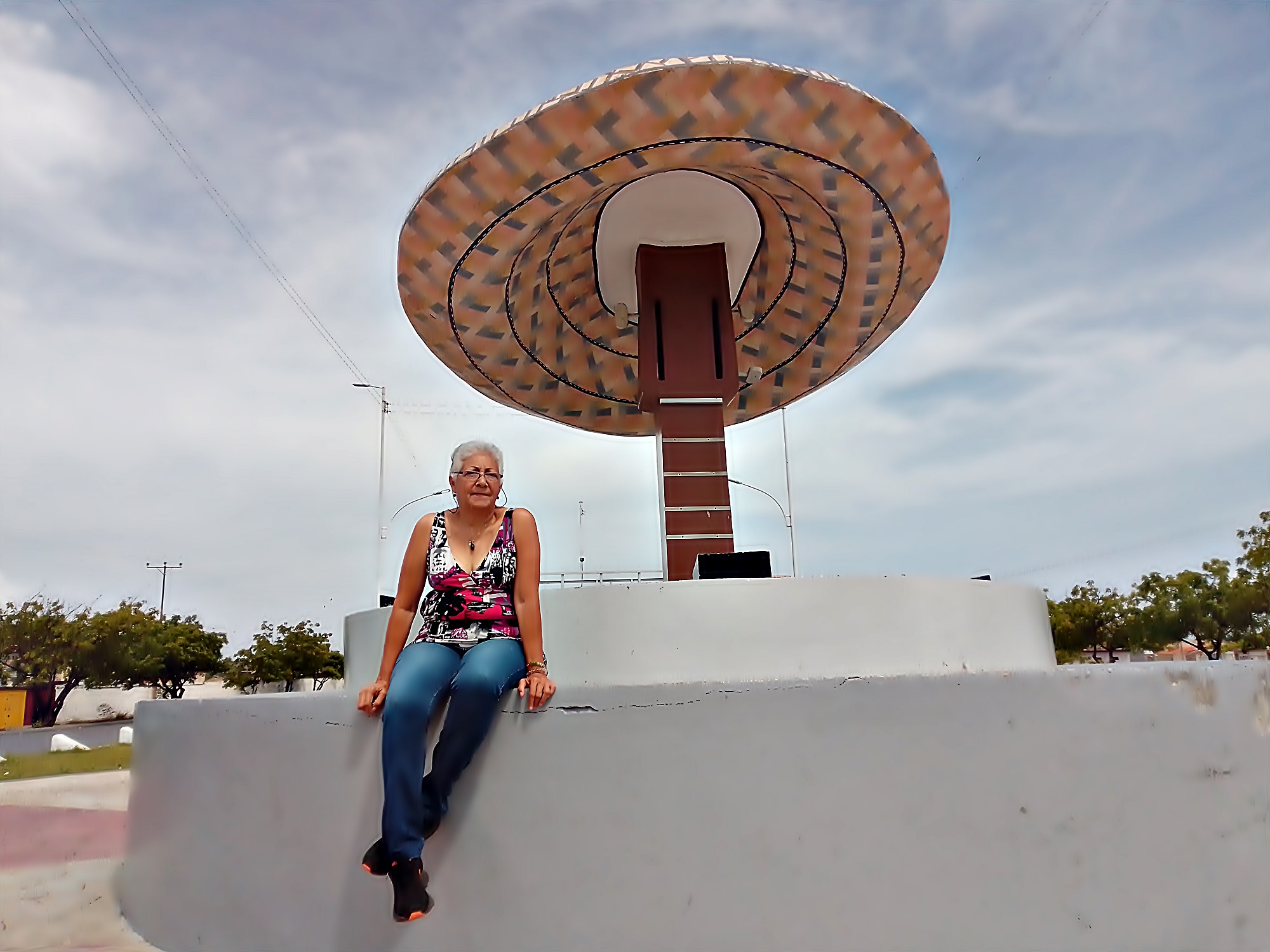
Aquí yo disfrutando un rato de la sombra que me daba el gran sombrero.Here I am enjoying the shade that the big hat gave me for a while.
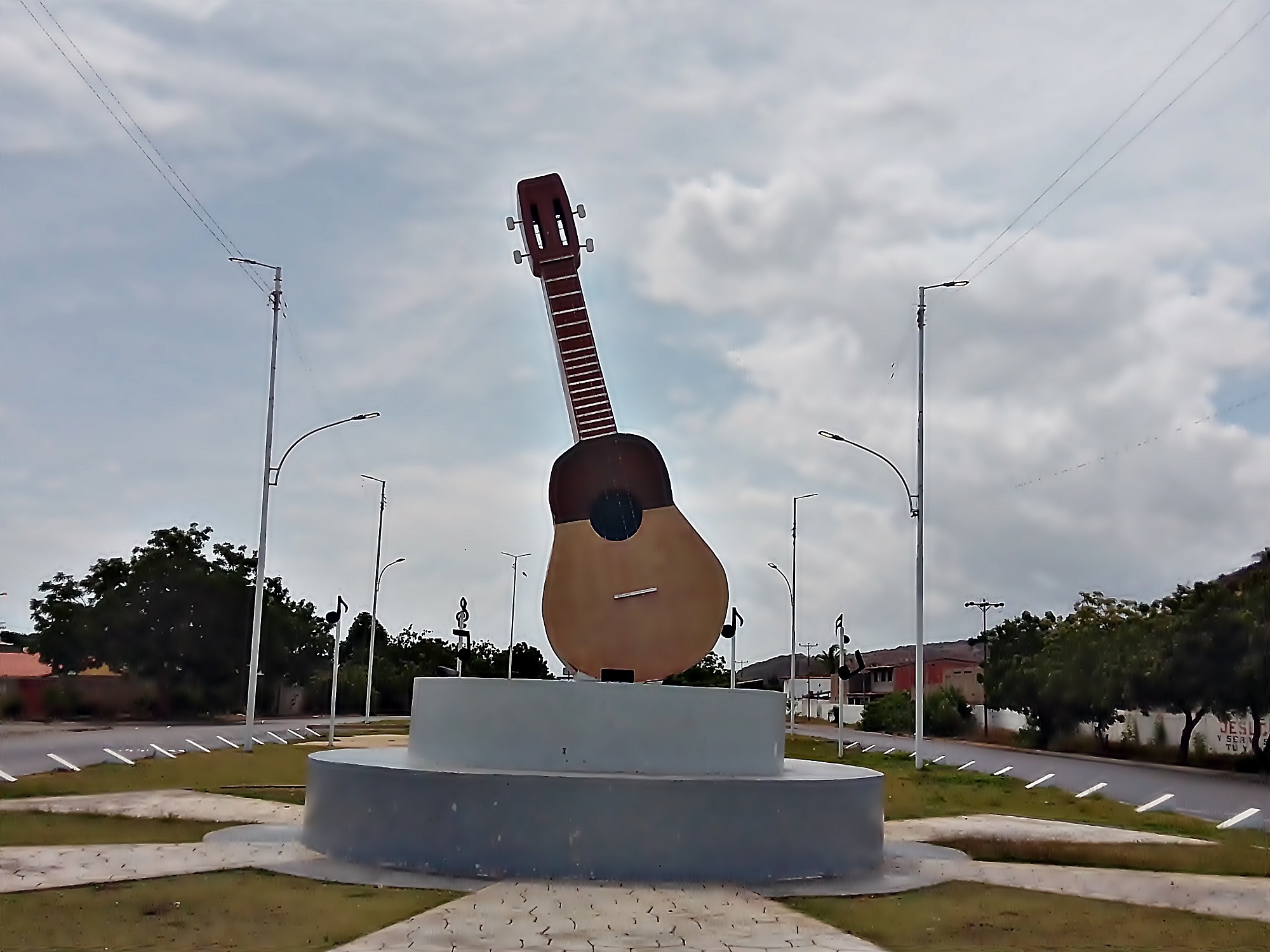
Esta es una escultura del instrumento típico de Venezuela, llamado "Cuatro", ya que tiene cuatro cuerdas, y que era el instrumento con que el cantante acompañaba todas sus canciones.This is a sculpture of the typical instrument of Venezuela, called "Cuatro", since it has four strings, and it was the instrument with which the singer accompanied all his songs.
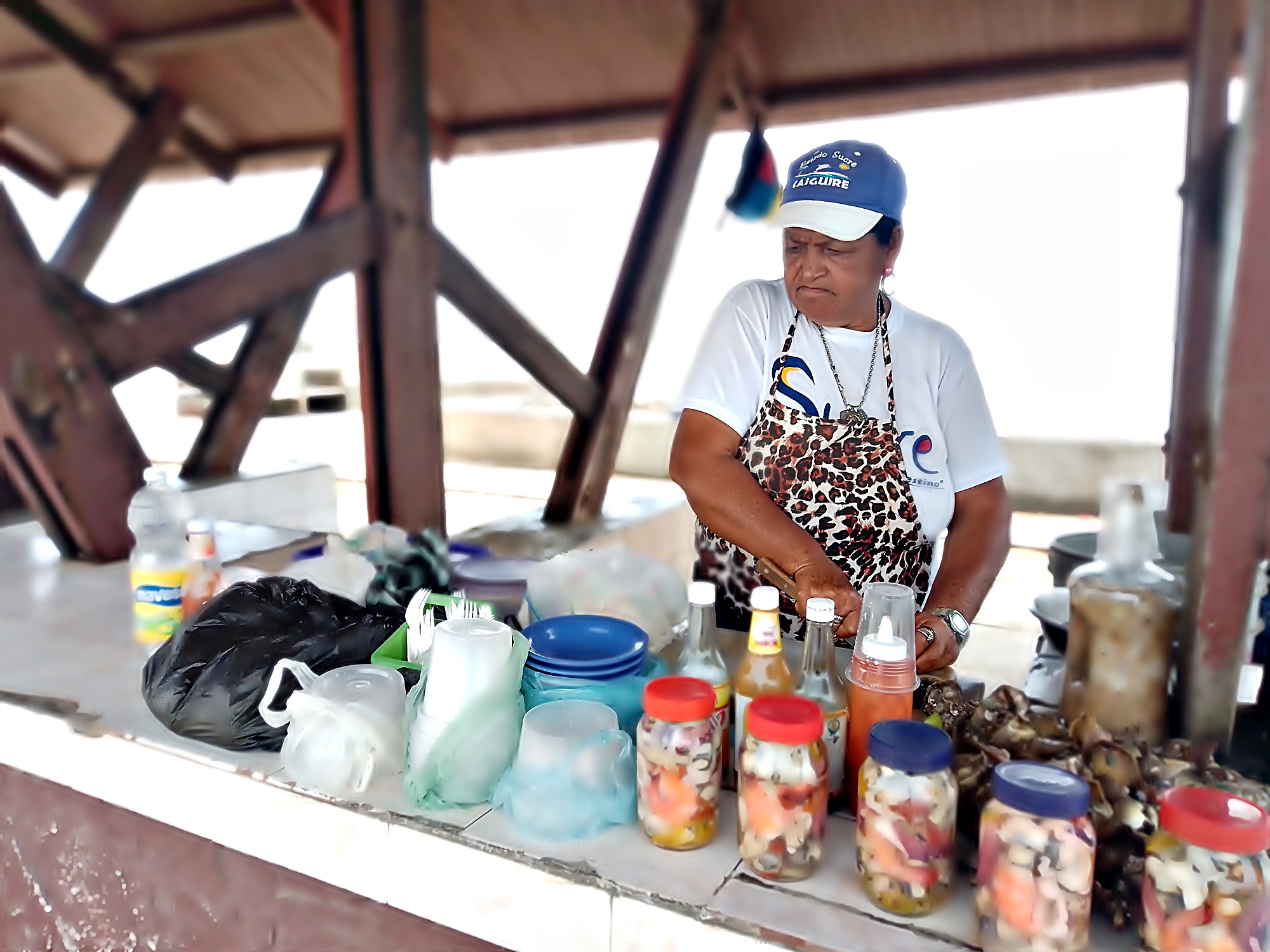
A la orilla de la playa y en las caminerias, se acostumbra a vender este plato de mariscos, tan codiciado por muchos, y es llamado "Rompe Colchón" por sus cualidades afrodisíacas...At the edge of the beach and on the paths, it is customary to sell this seafood dish, so coveted by many, and it is called "Rompe Colchón" for its aphrodisiac qualities ...
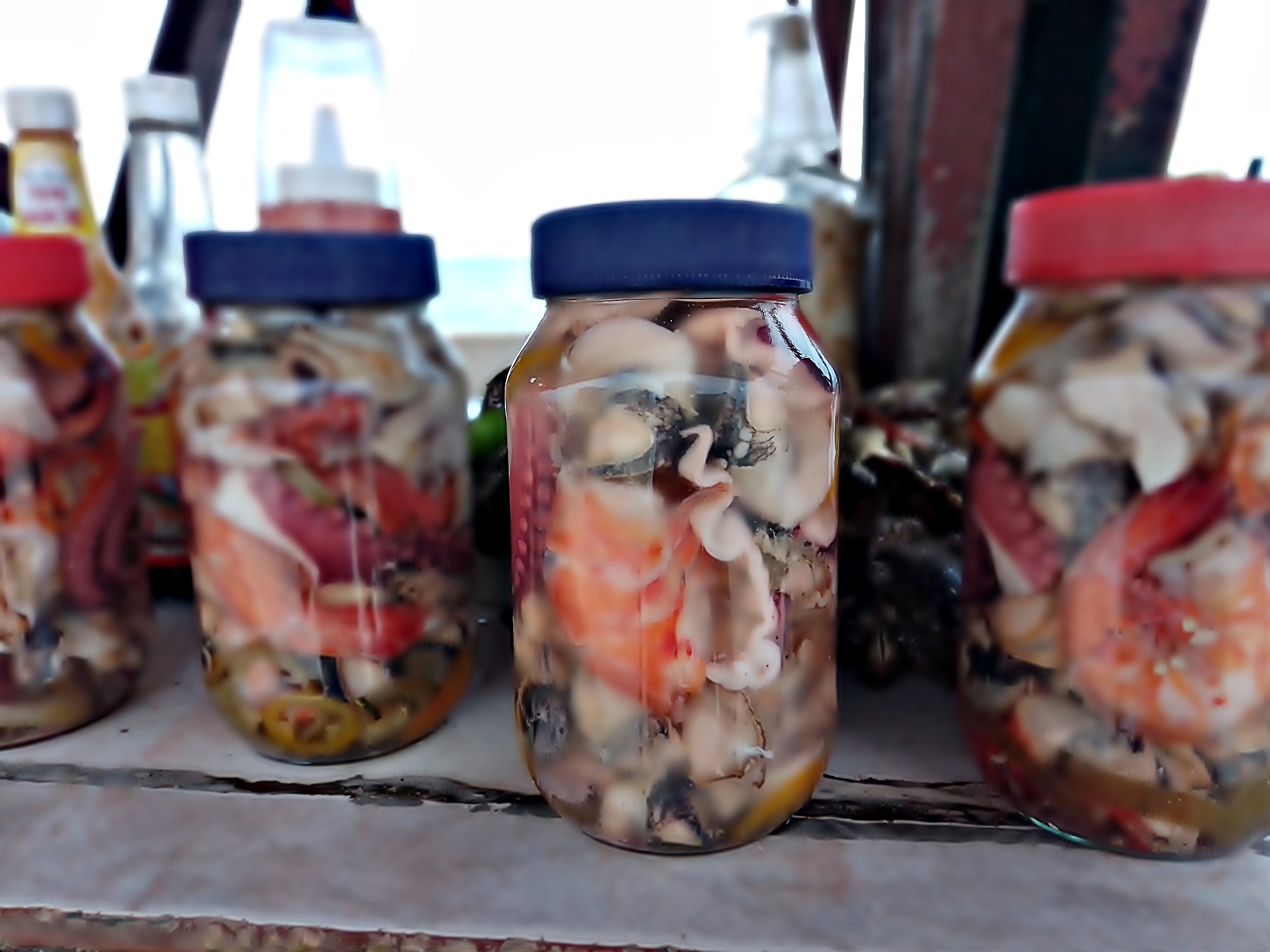
Se puede observar la gran variedad de mariscos dentro del frasco...You can see the great variety of seafood inside the jar ...

Bueno, espero que hayan podido disfrutar, de este post y que se animen a visitar esta bella ciudad de Cumaná, ubicada en el Estado Sucre, de Venezuela. Nos vemos en la próxima...
Well, I hope you have been able to enjoy this post and that you are encouraged to visit this beautiful city of Cumaná, located in the Sucre State of Venezuela. See you next time...
@benavides54
































Congratulations @benavides54! You have completed the following achievement on the Hive blockchain and have been rewarded with new badge(s) :
Your next target is to reach 15000 upvotes.
You can view your badges on your board and compare yourself to others in the Ranking
If you no longer want to receive notifications, reply to this comment with the word
STOP